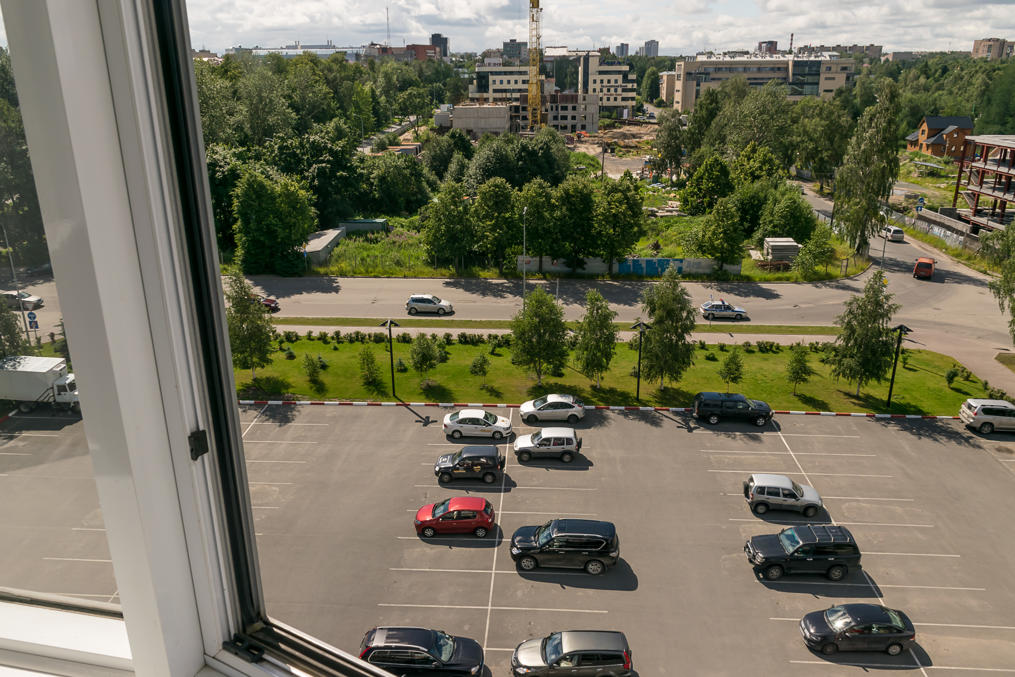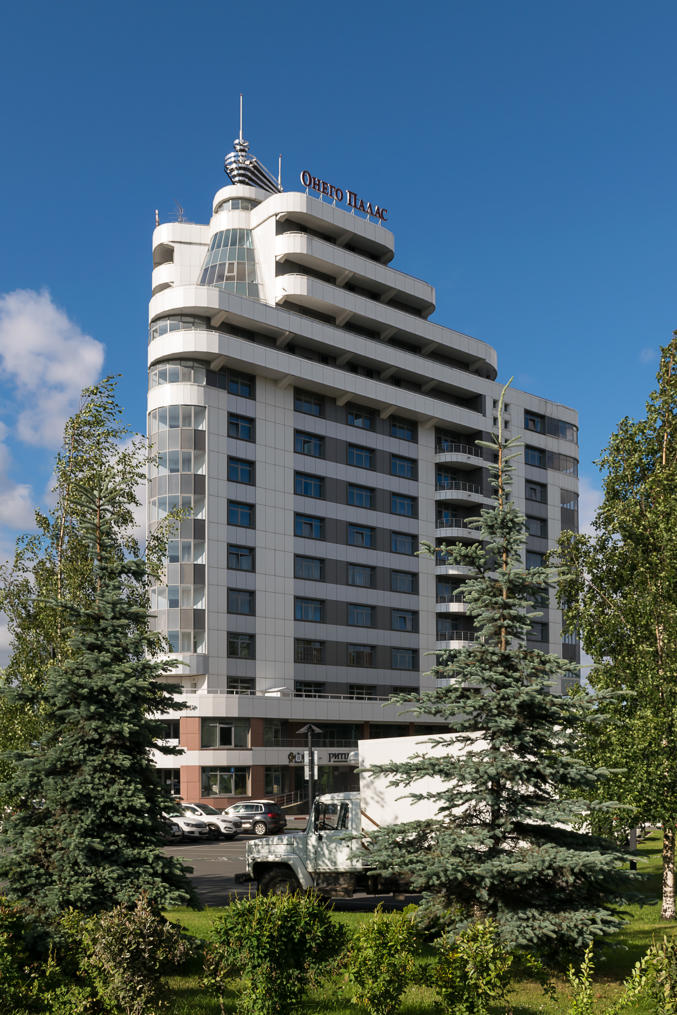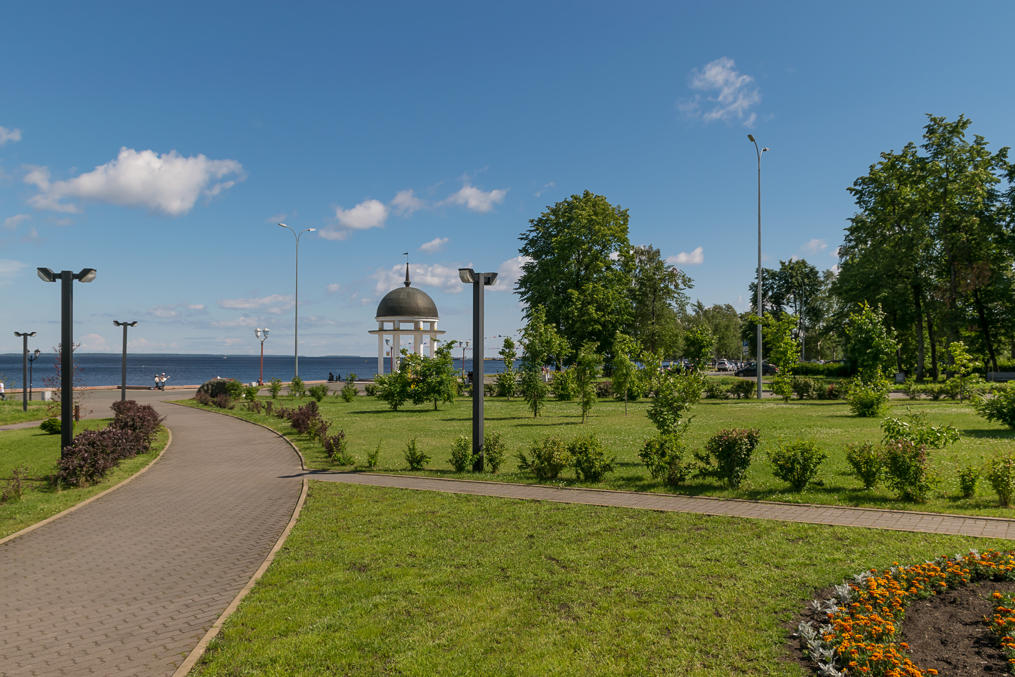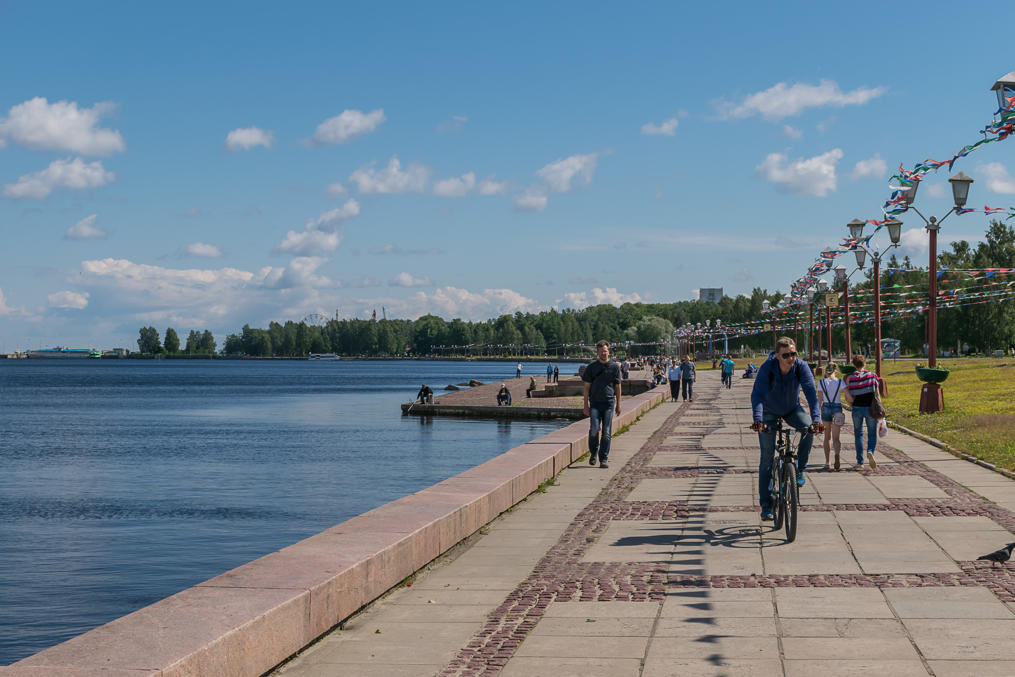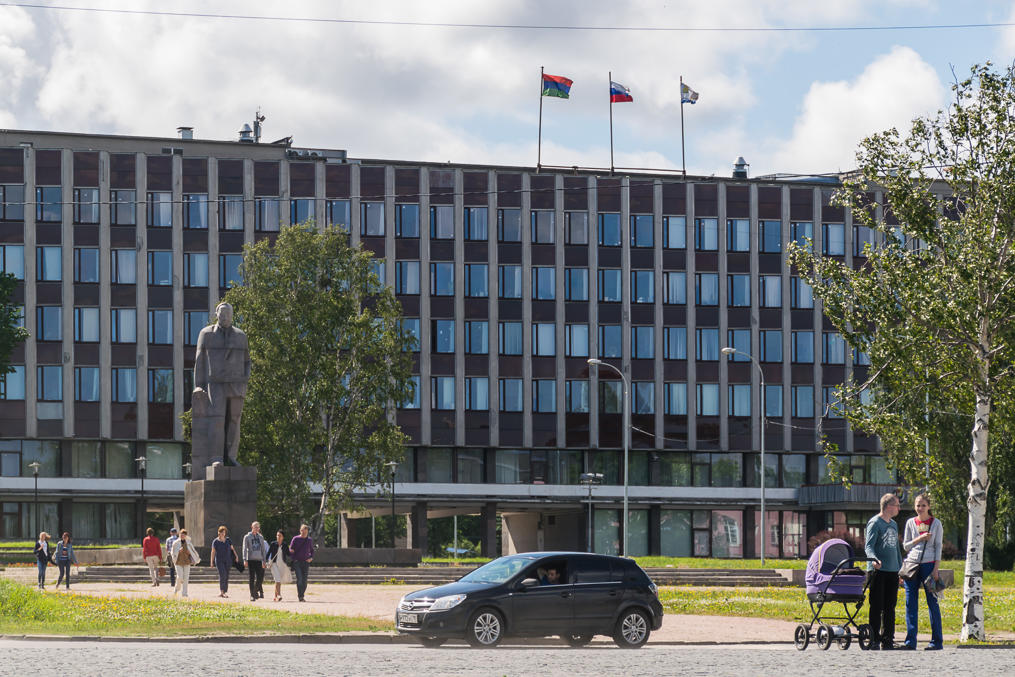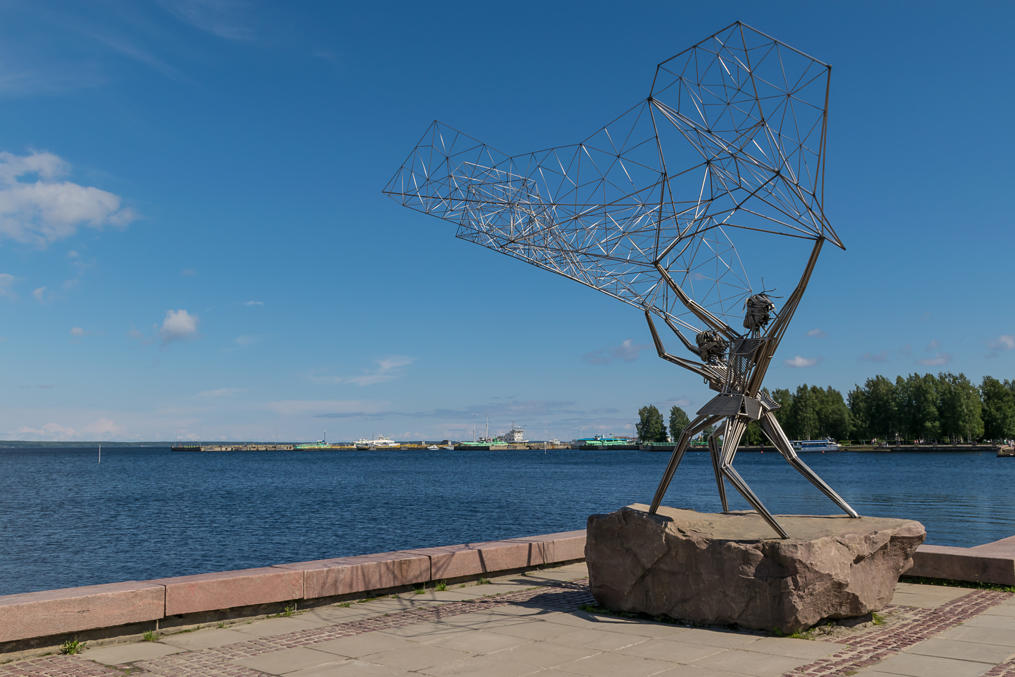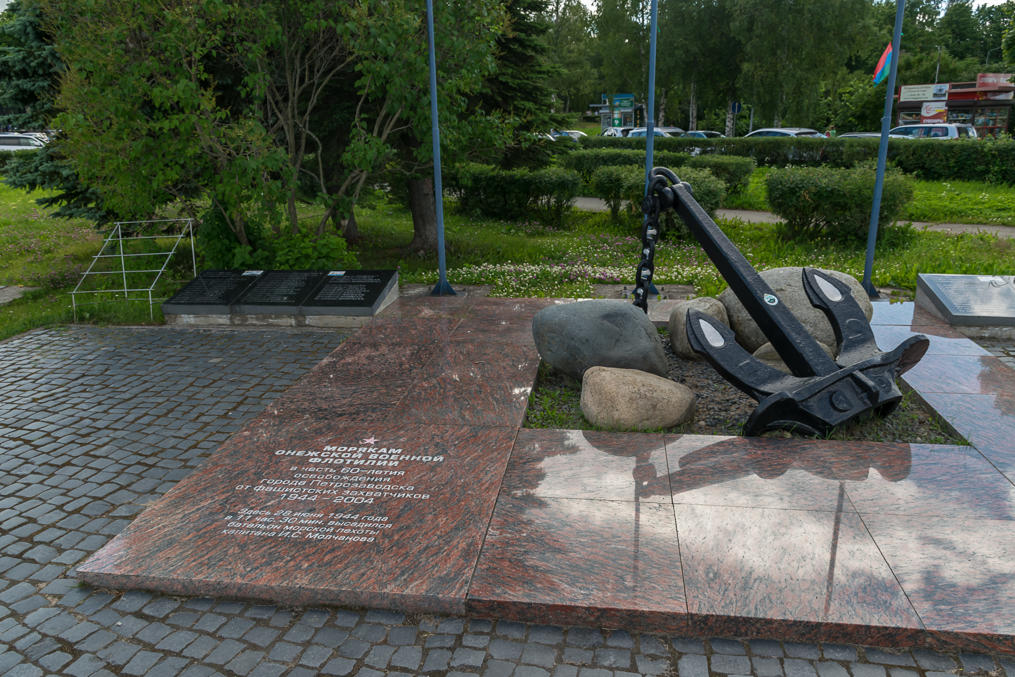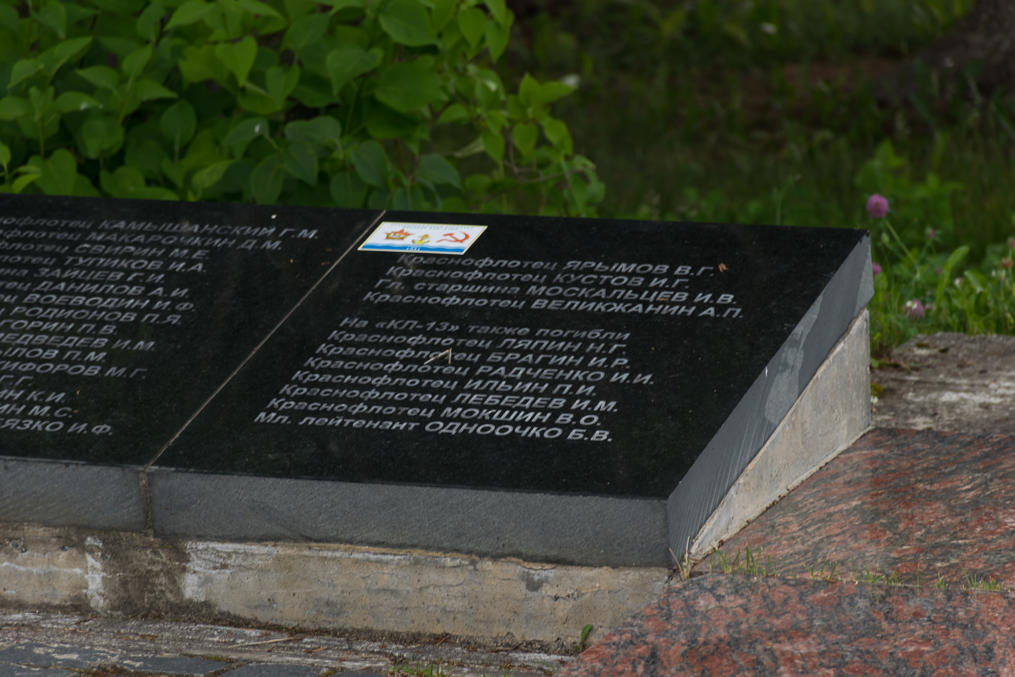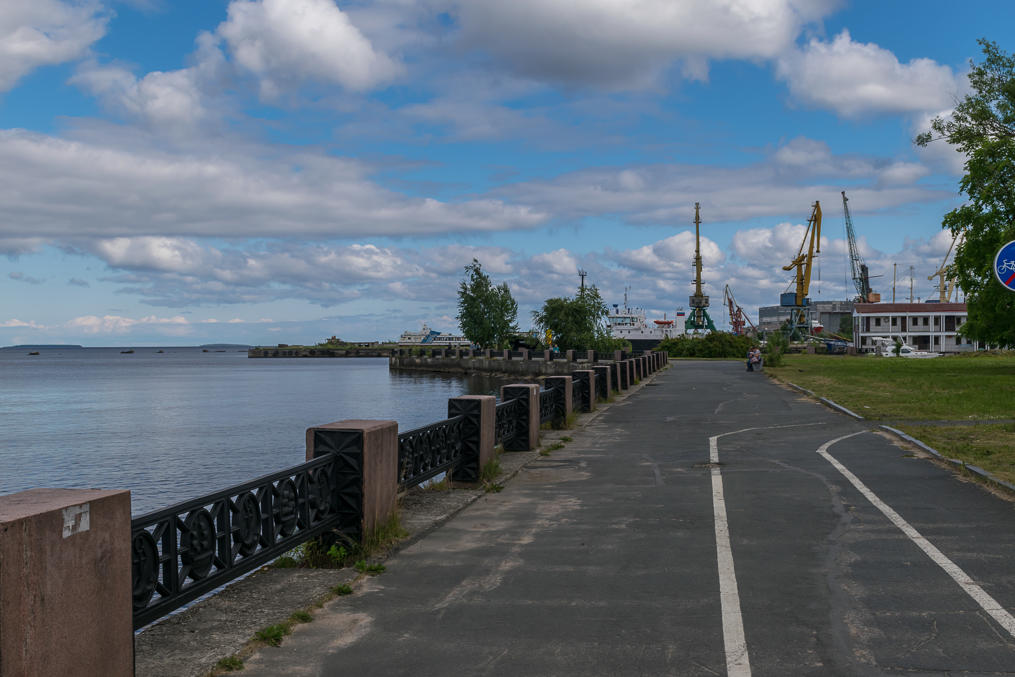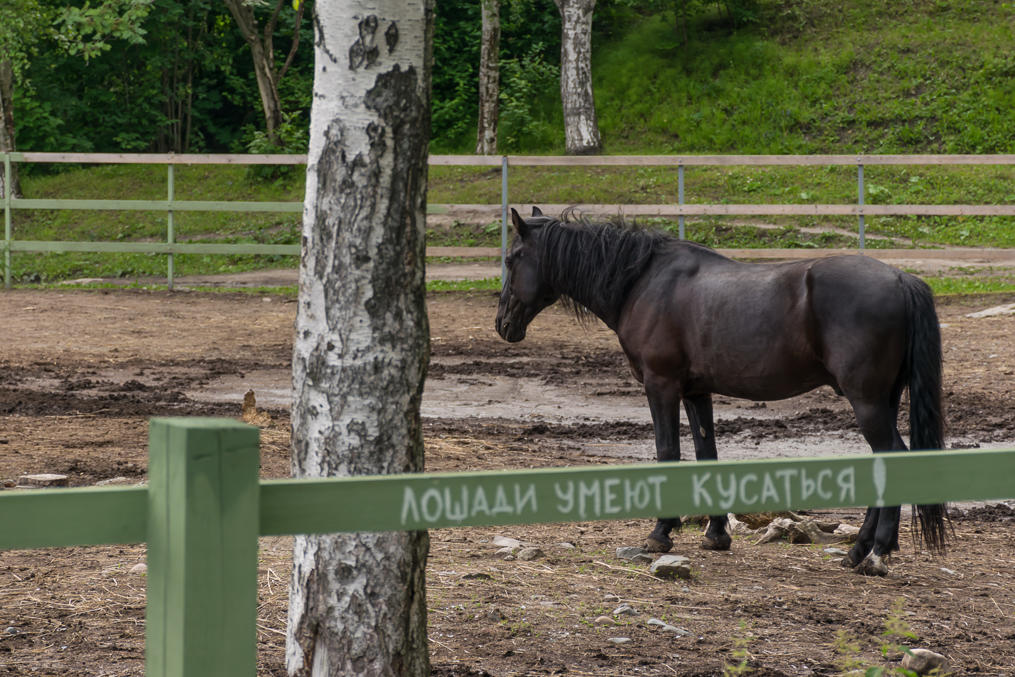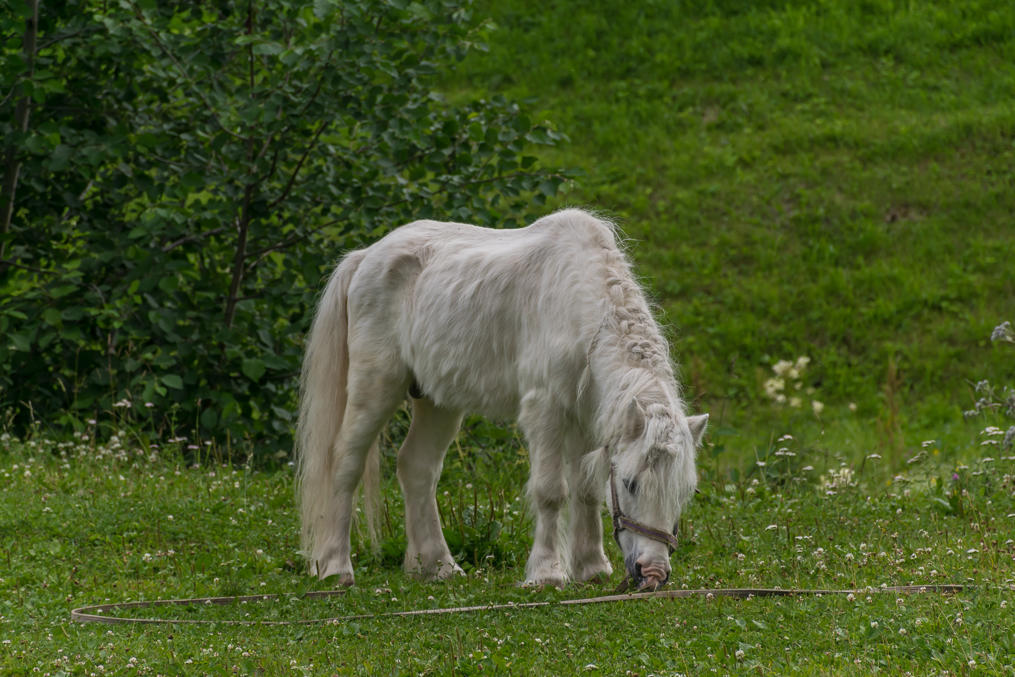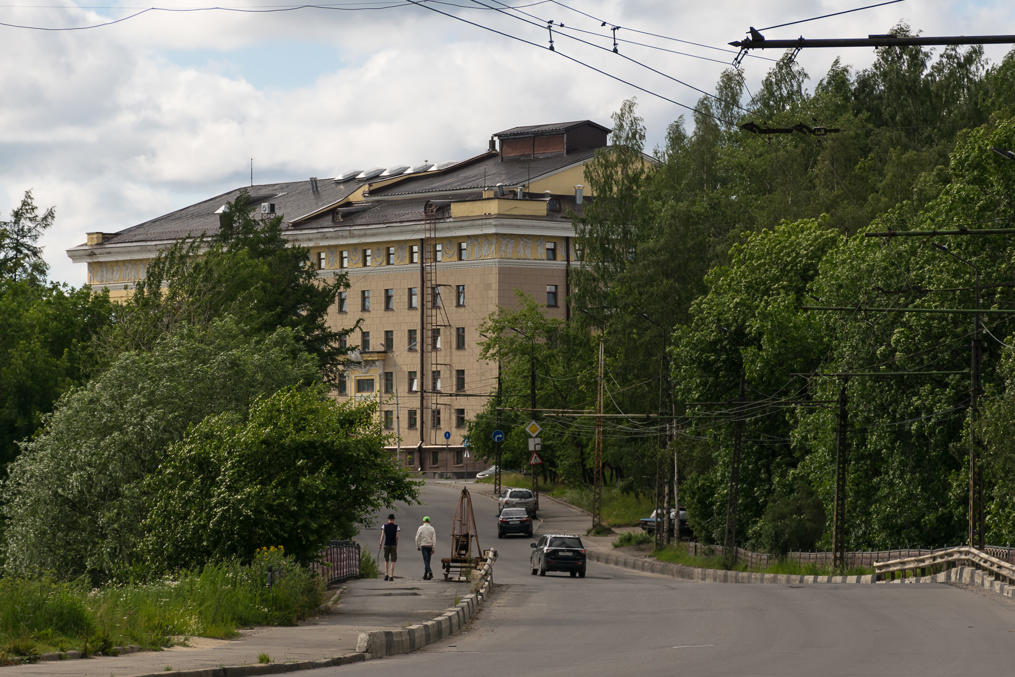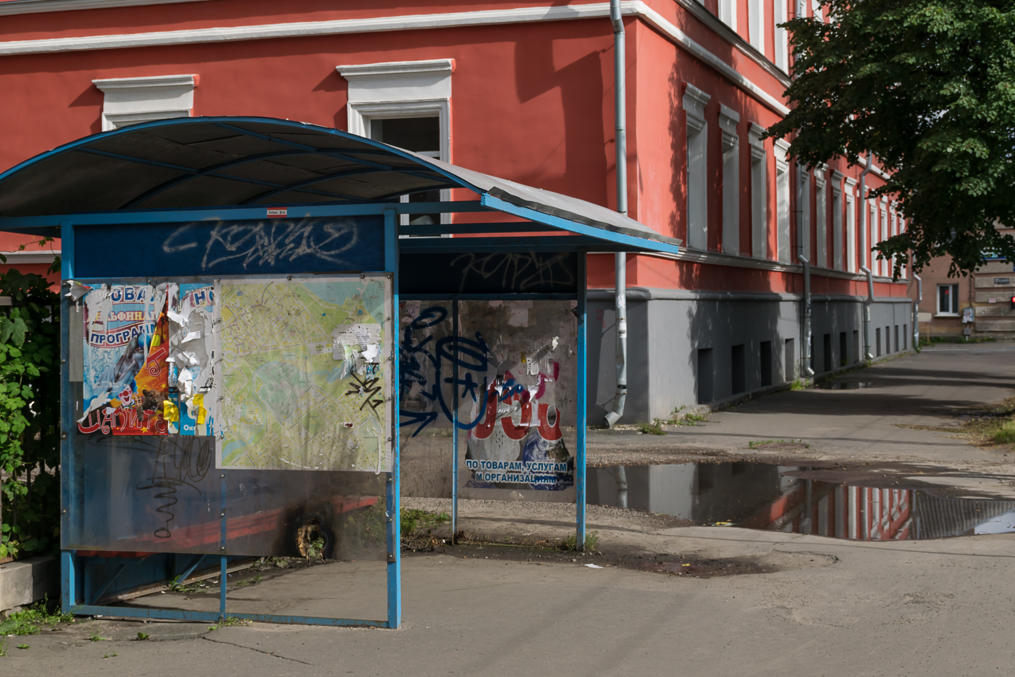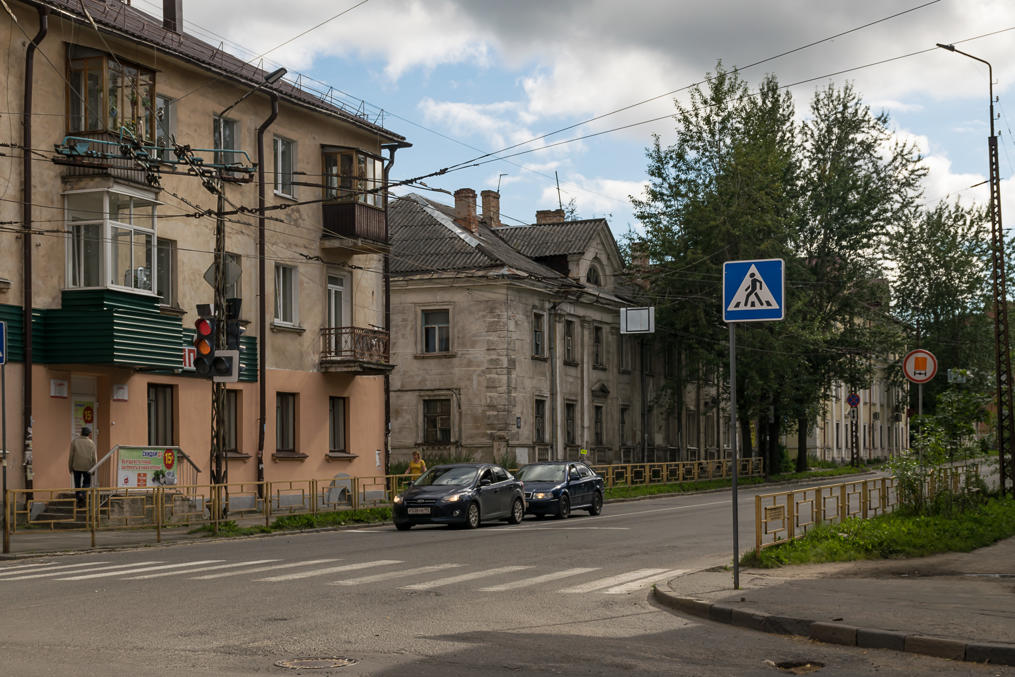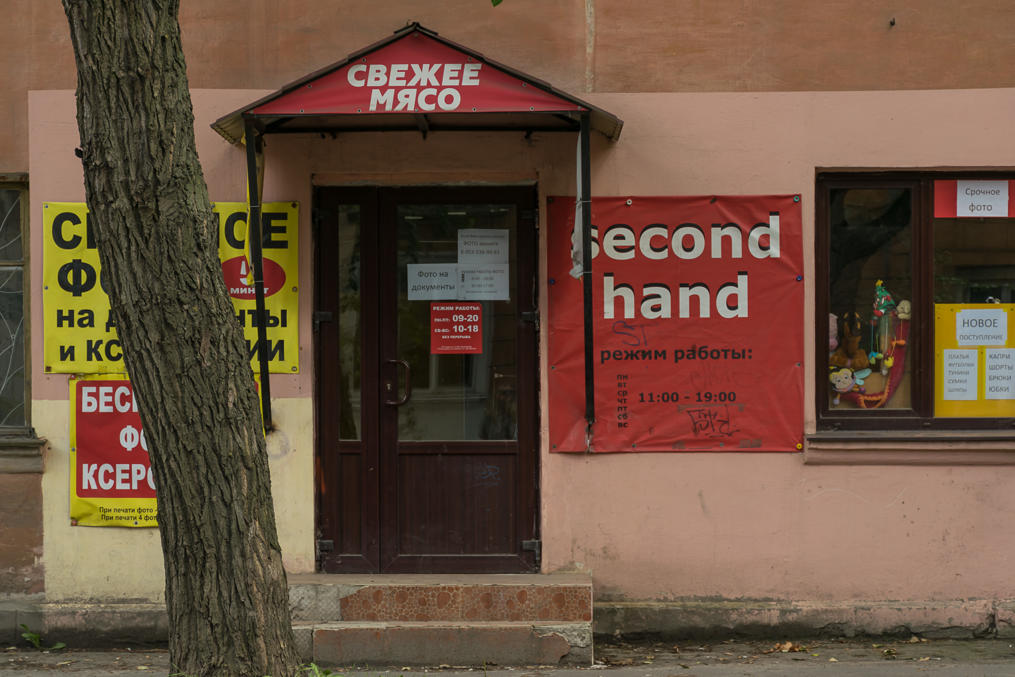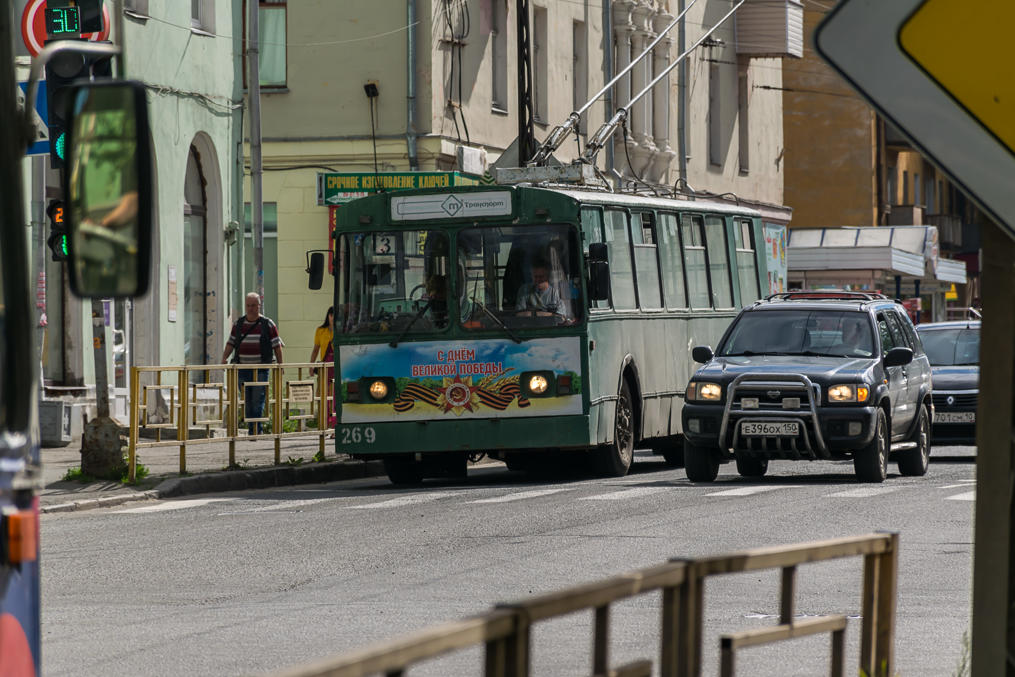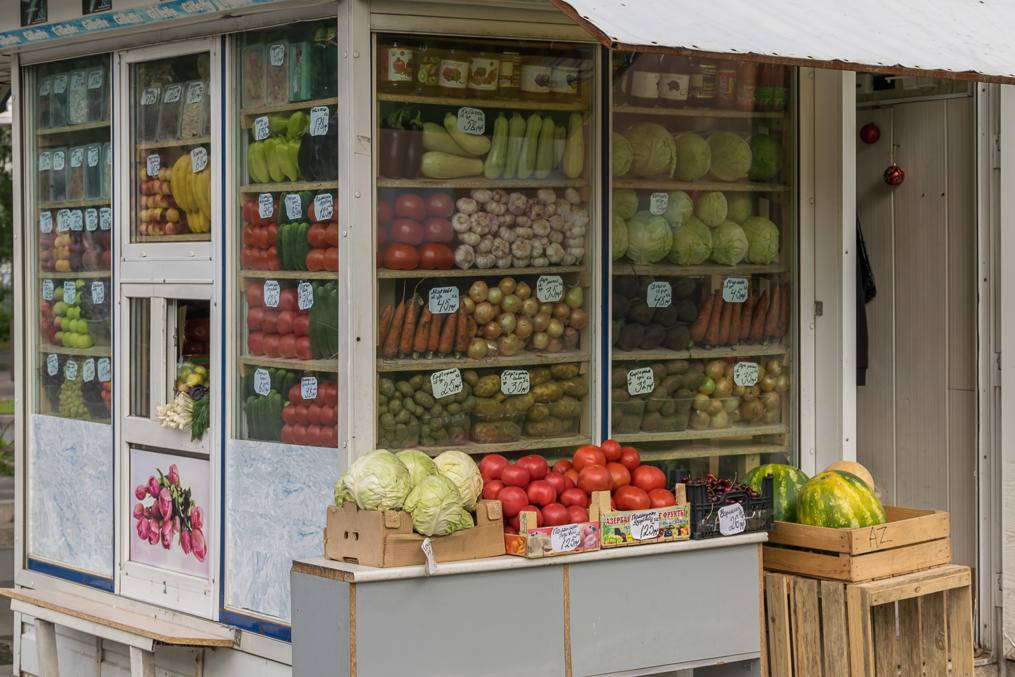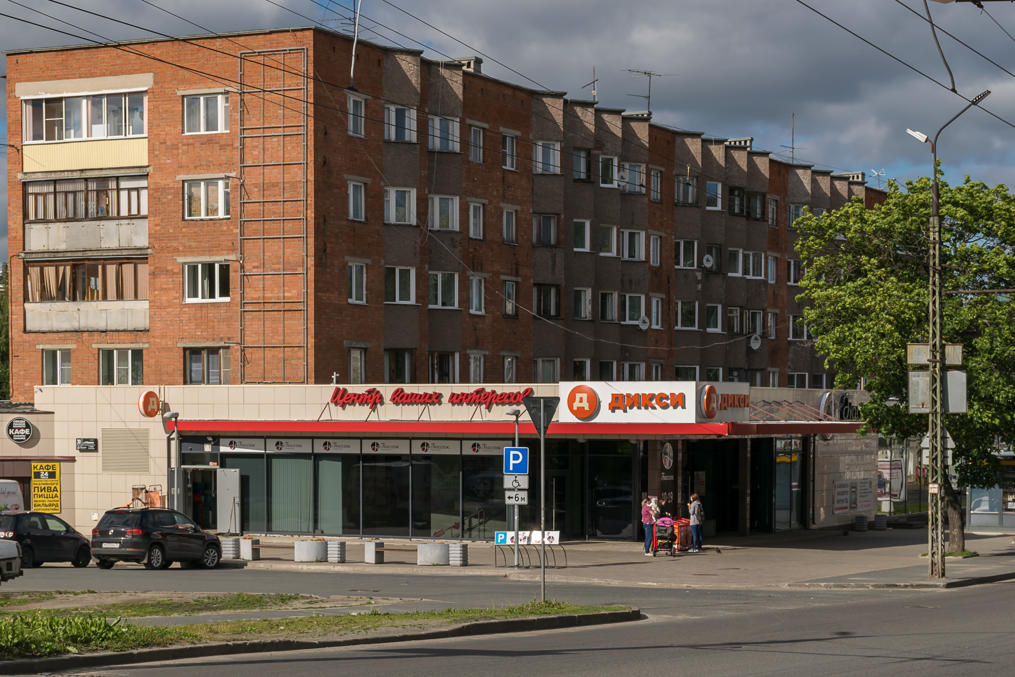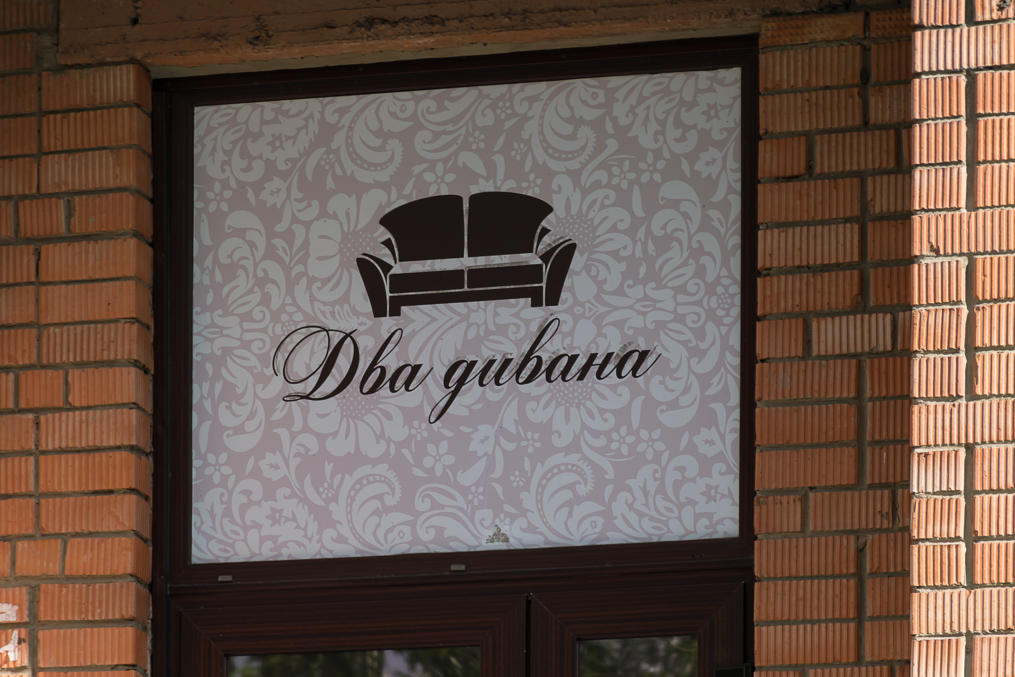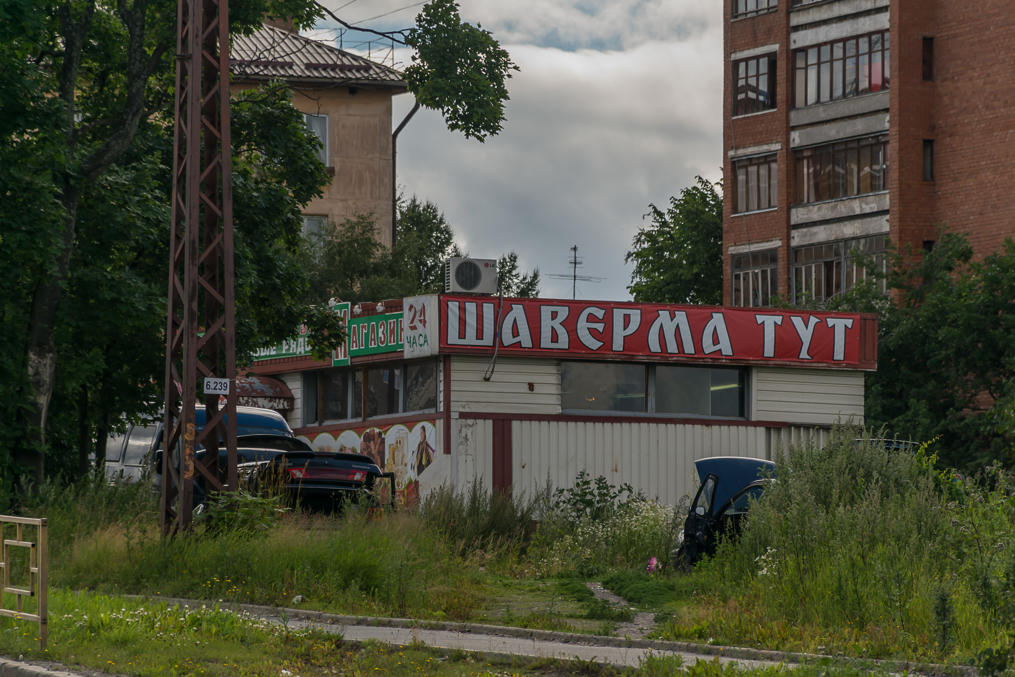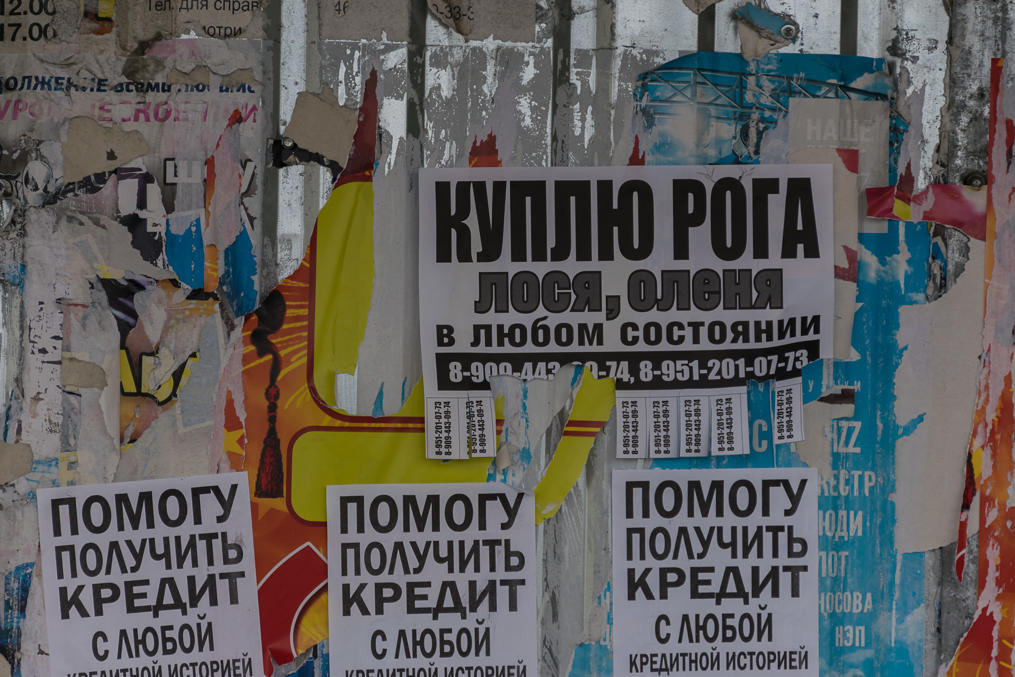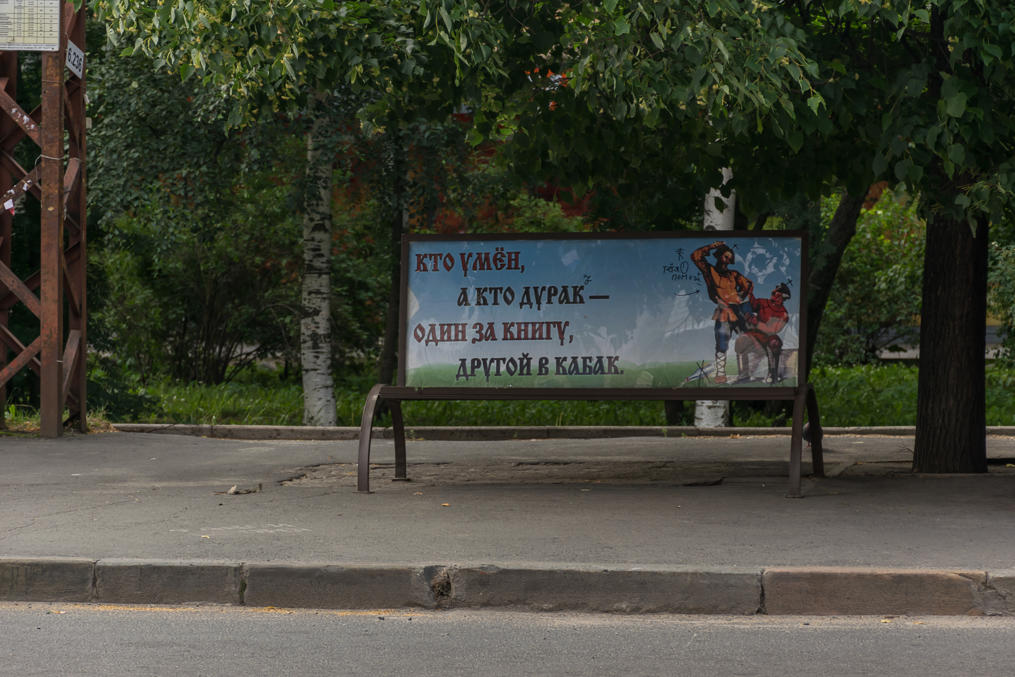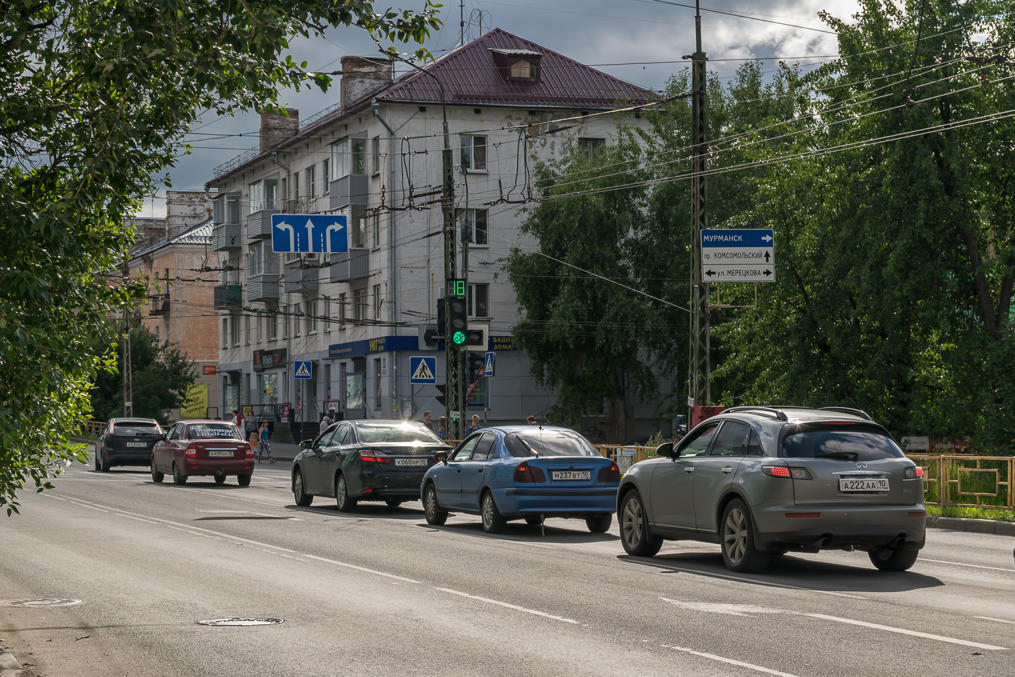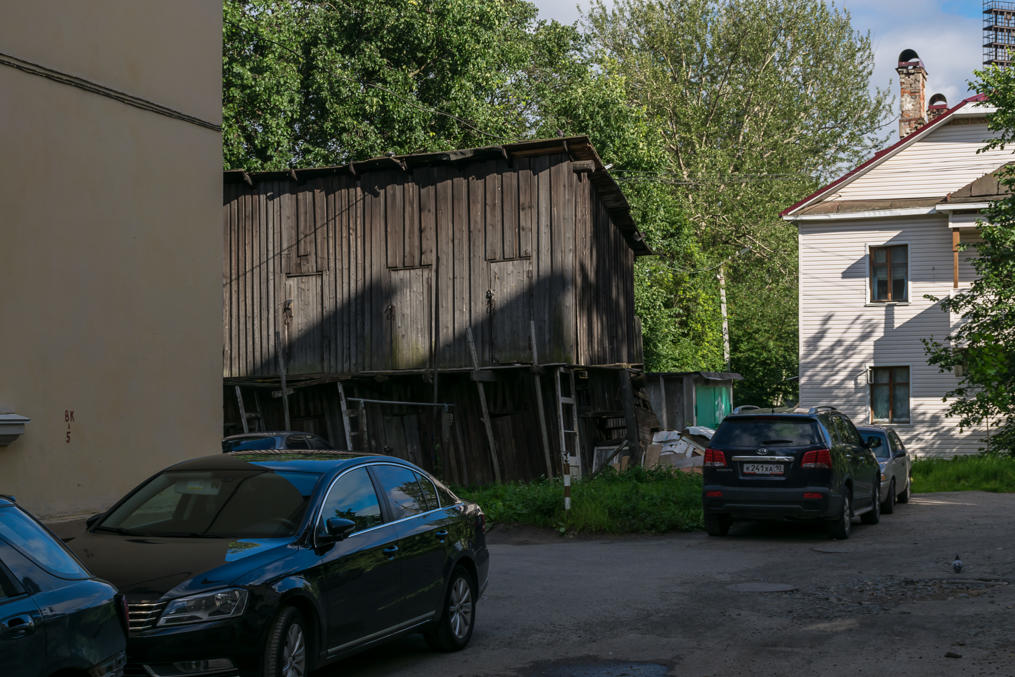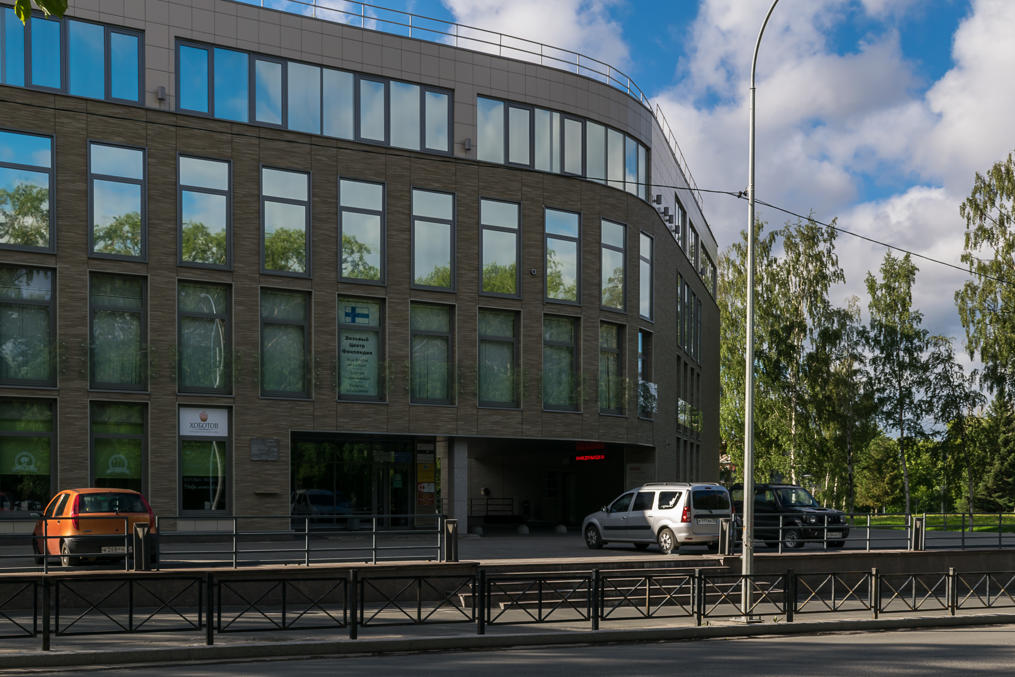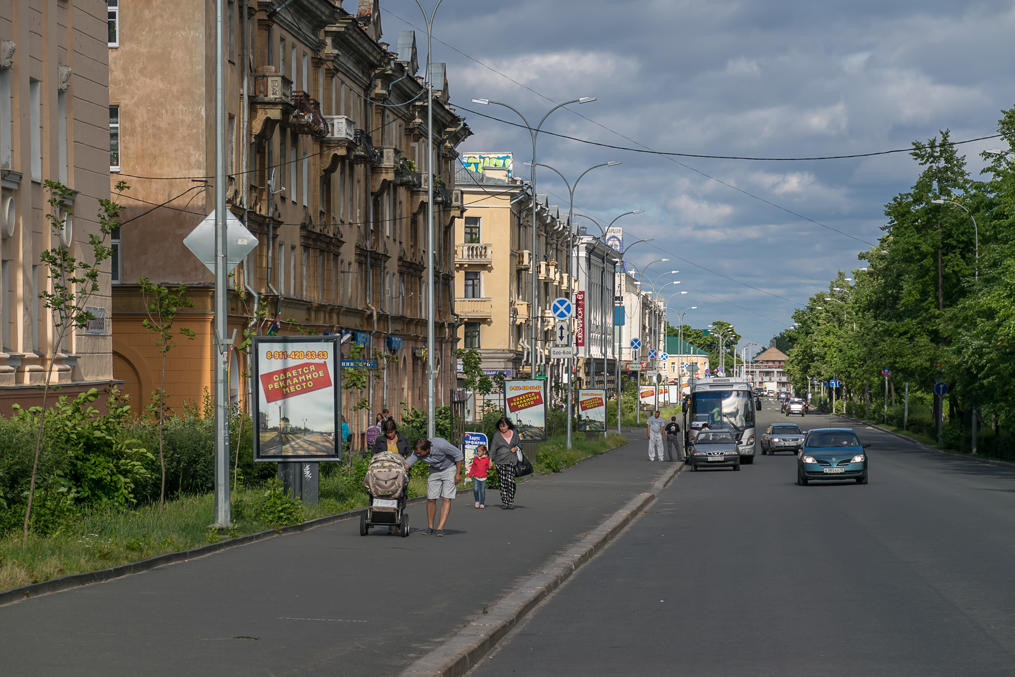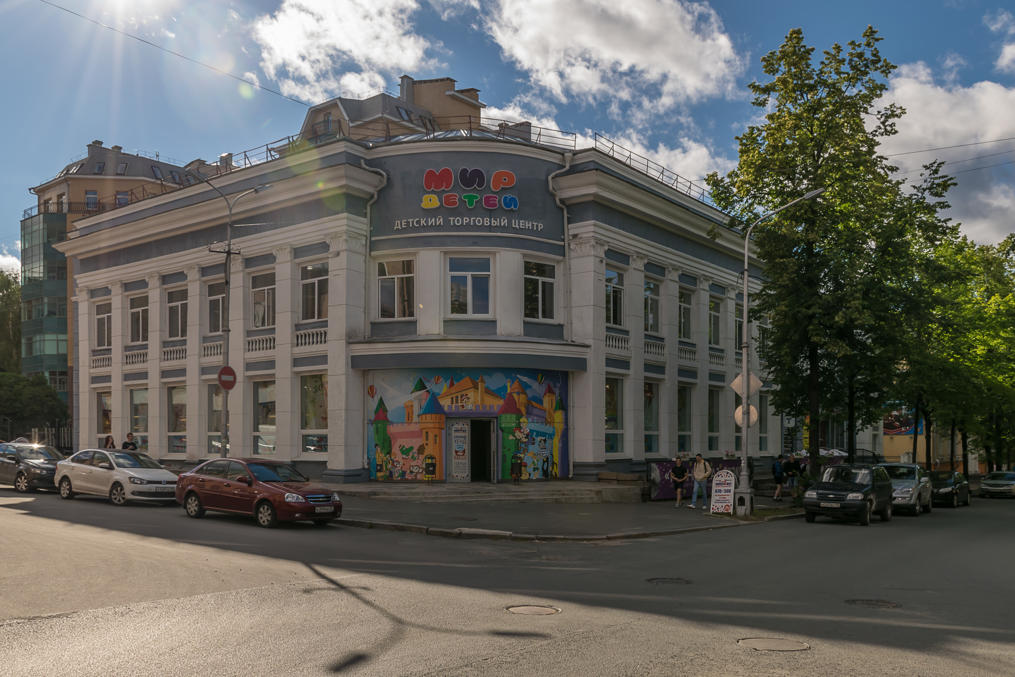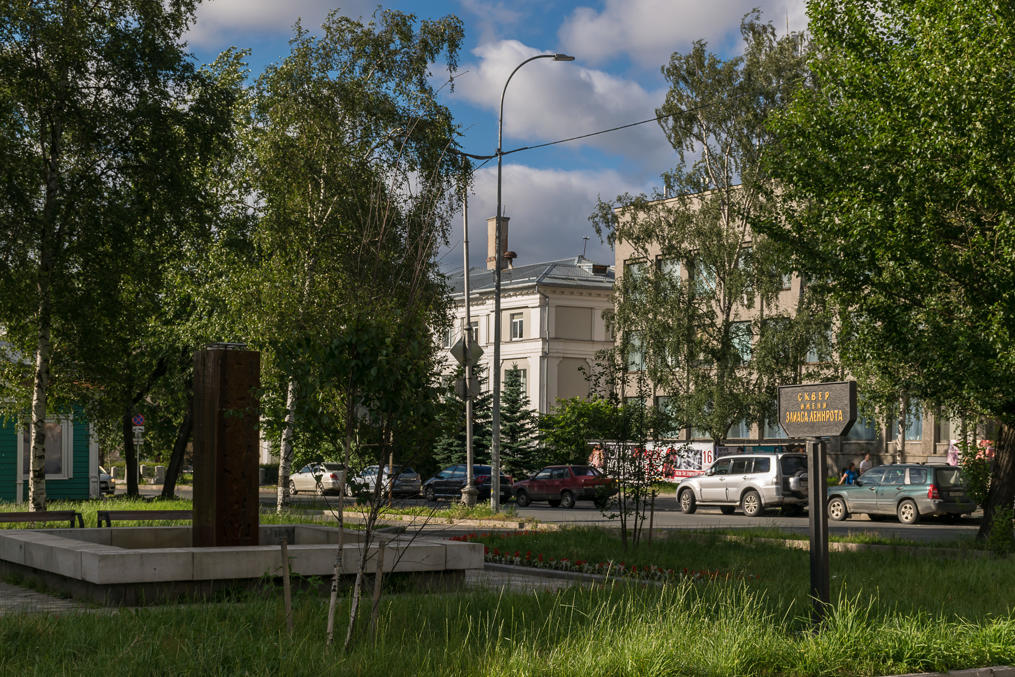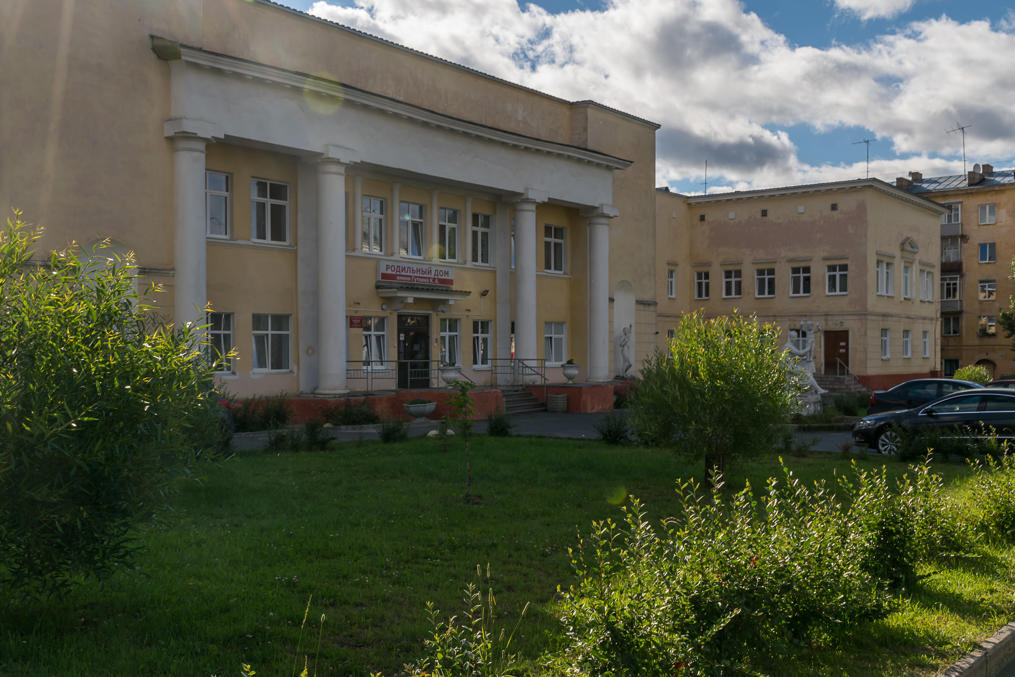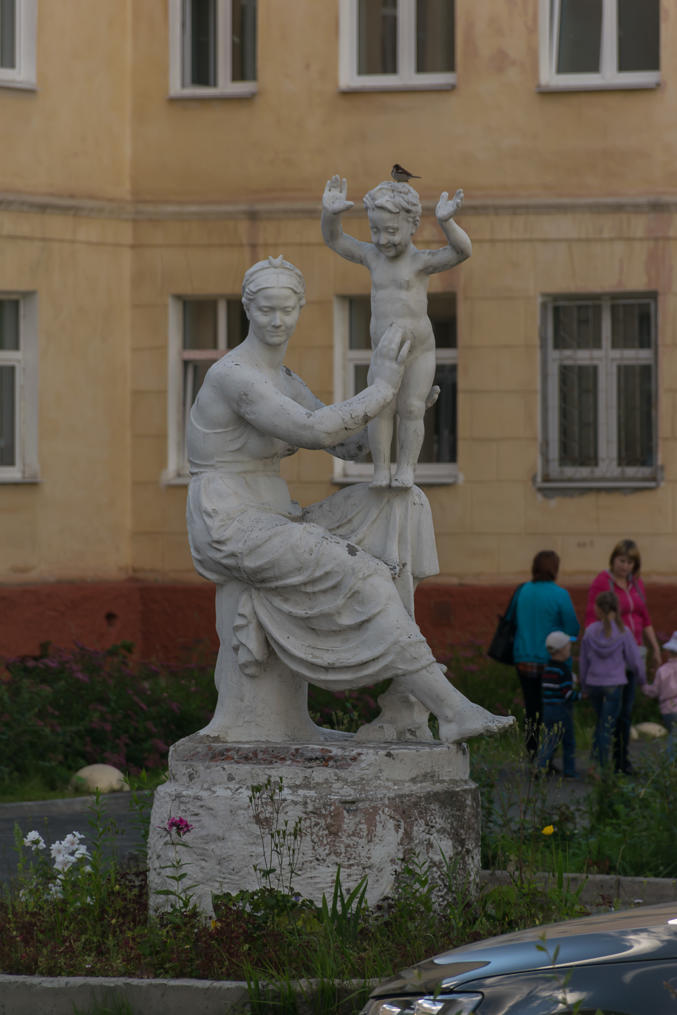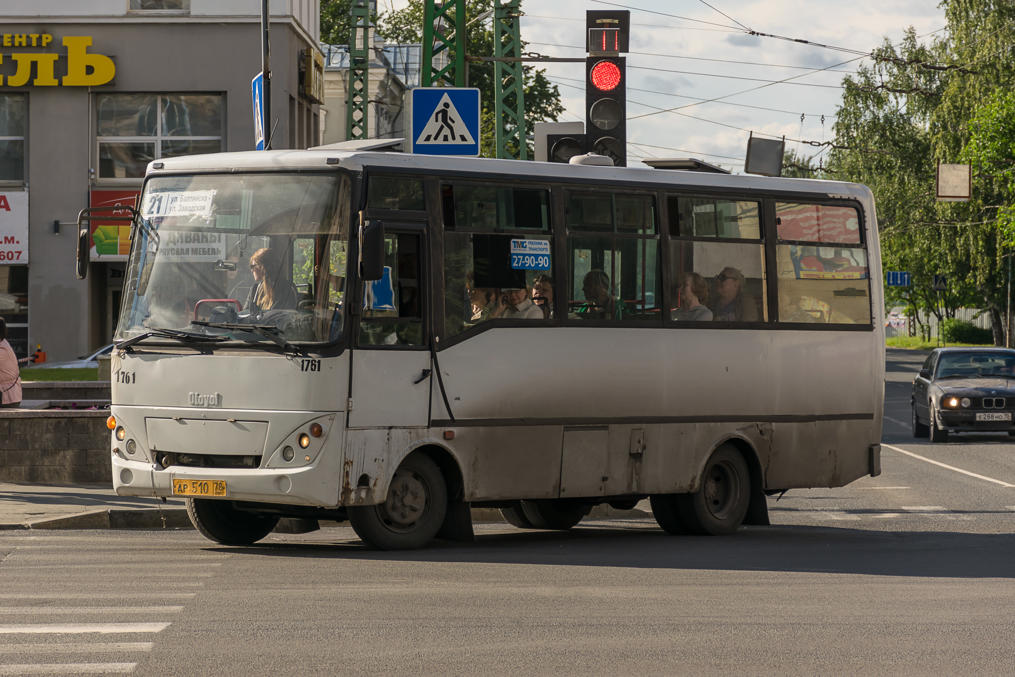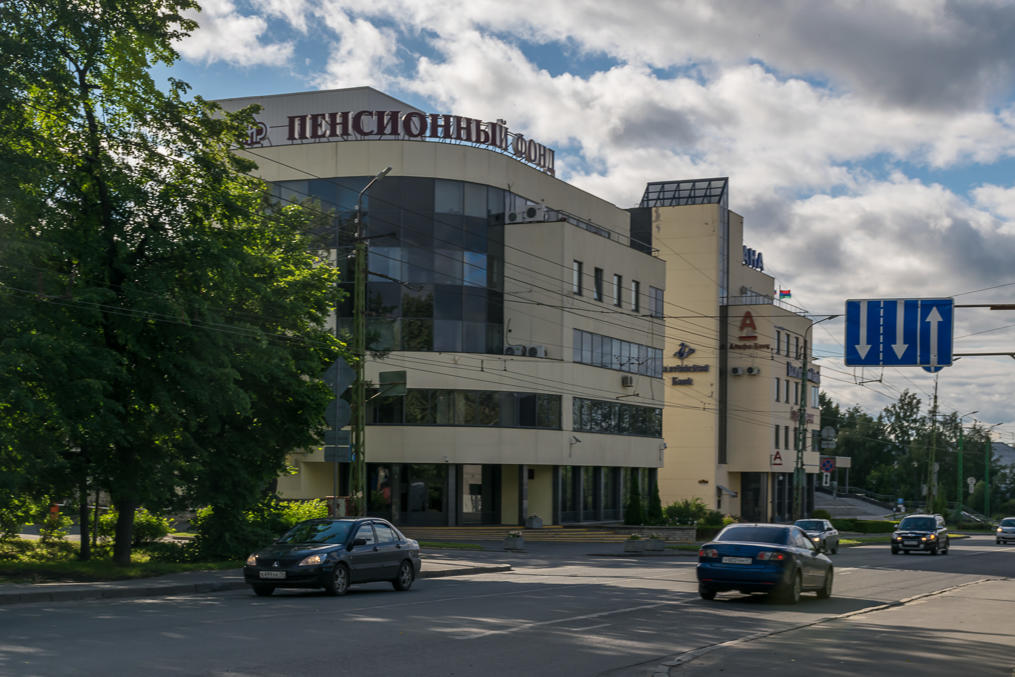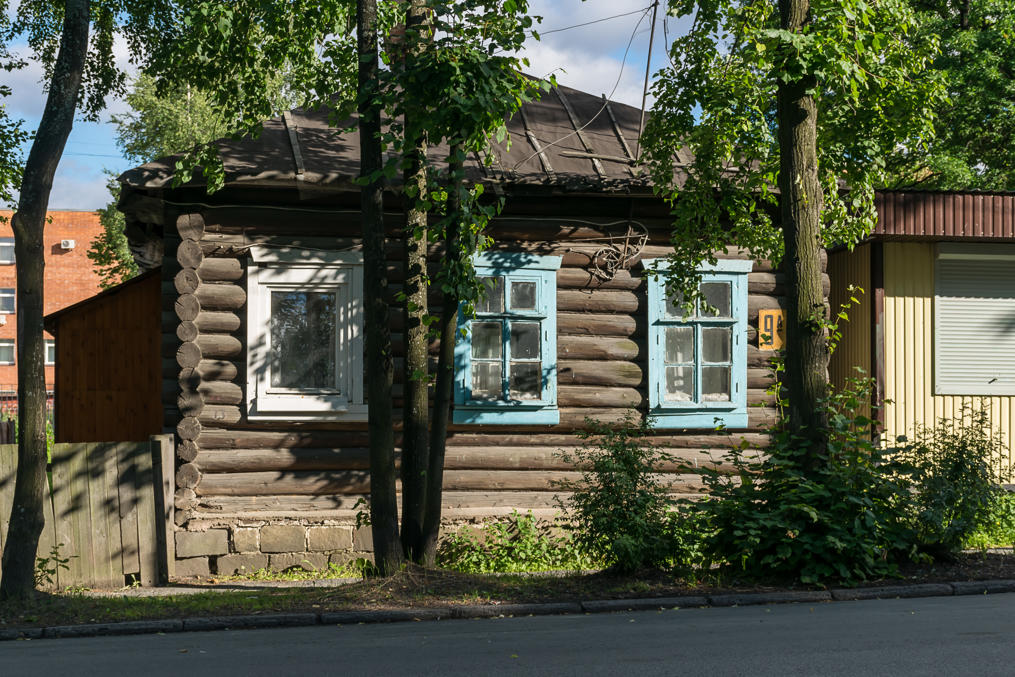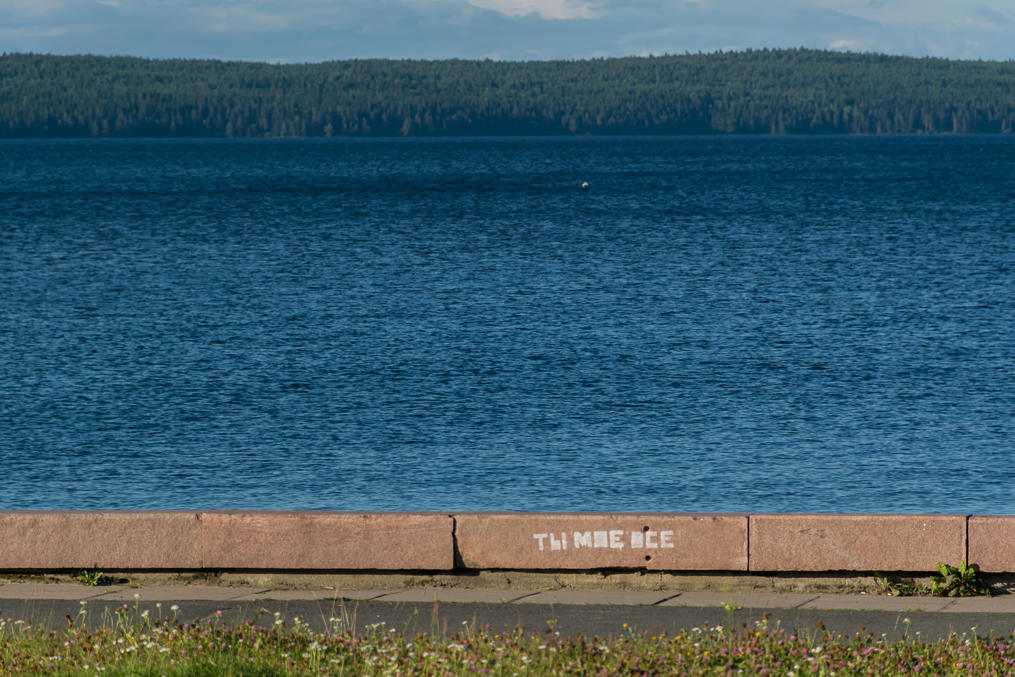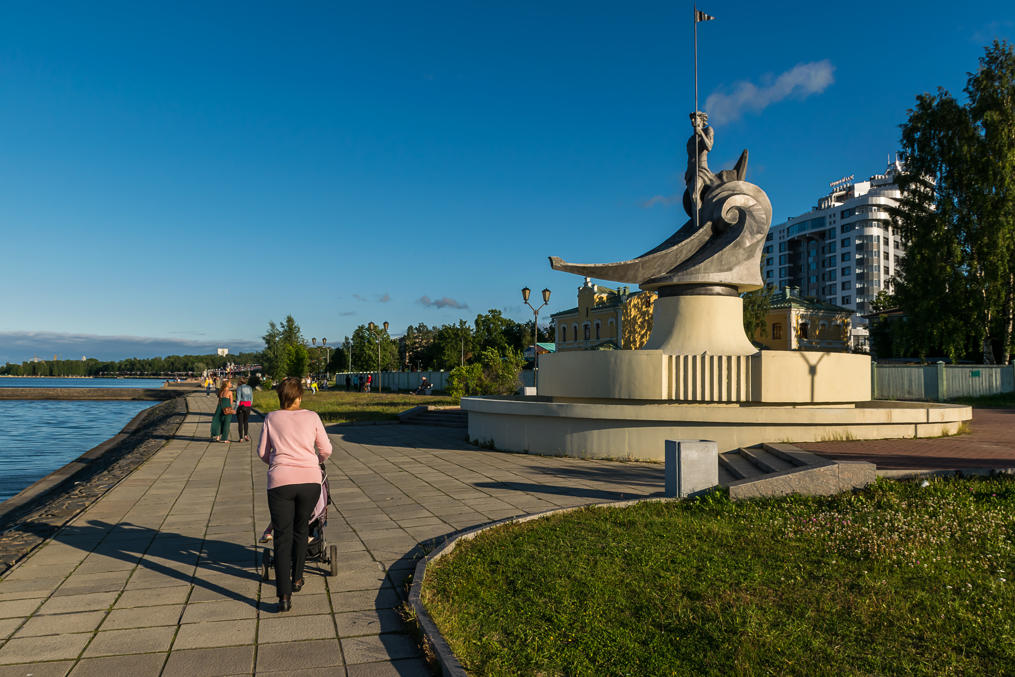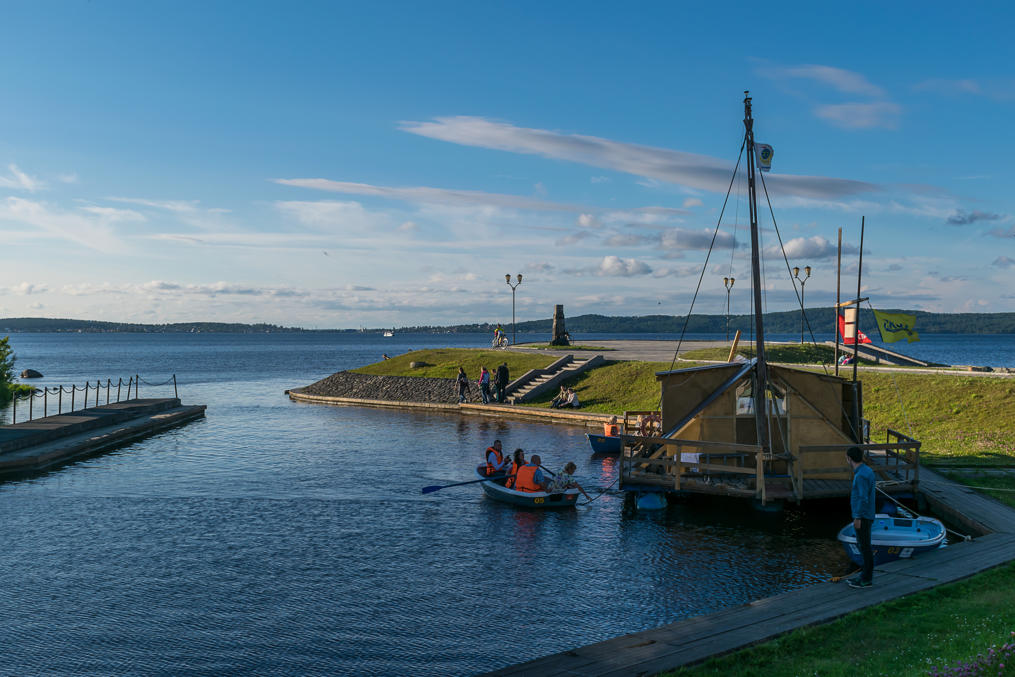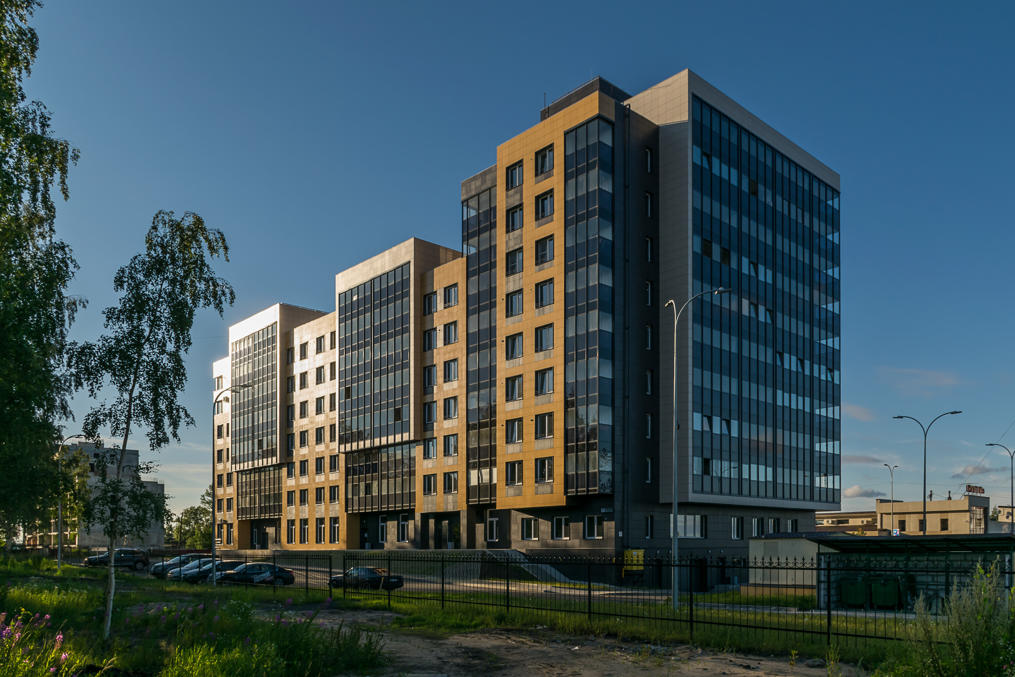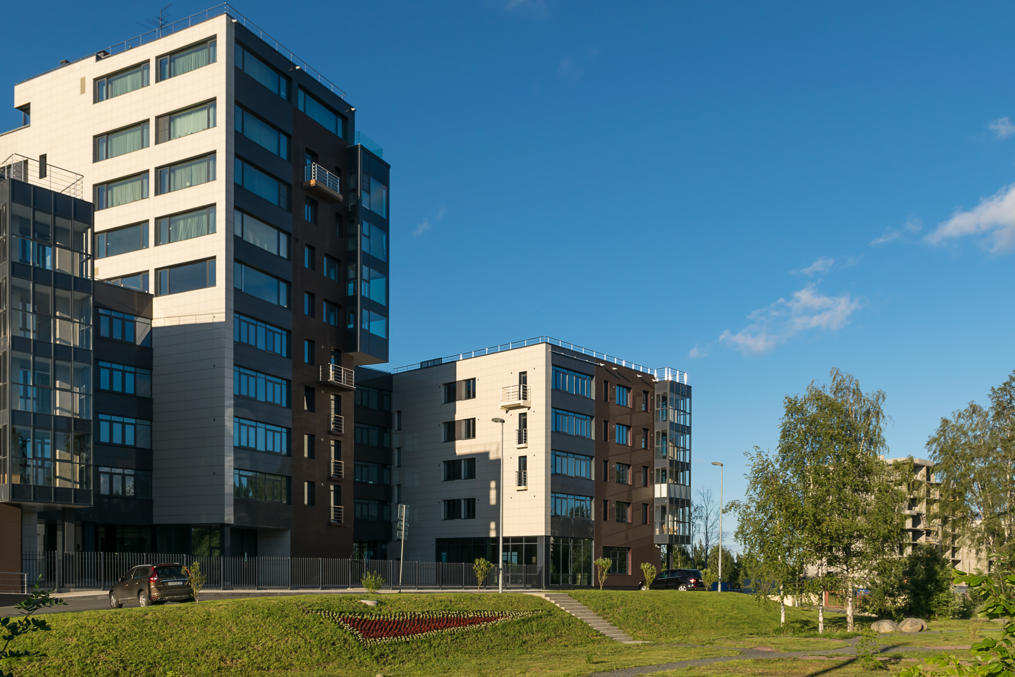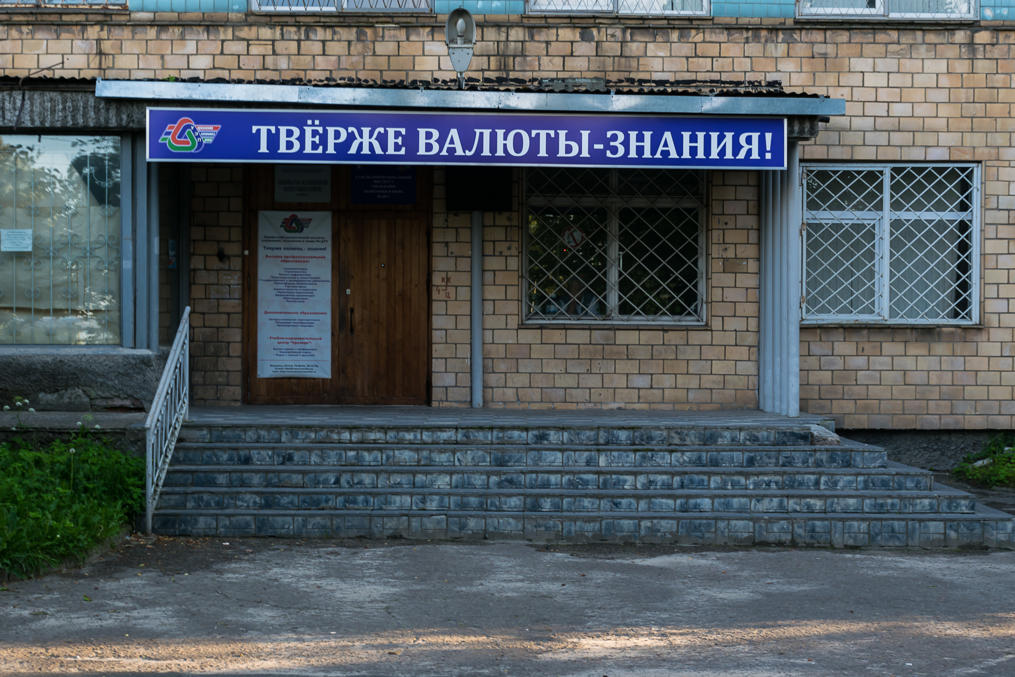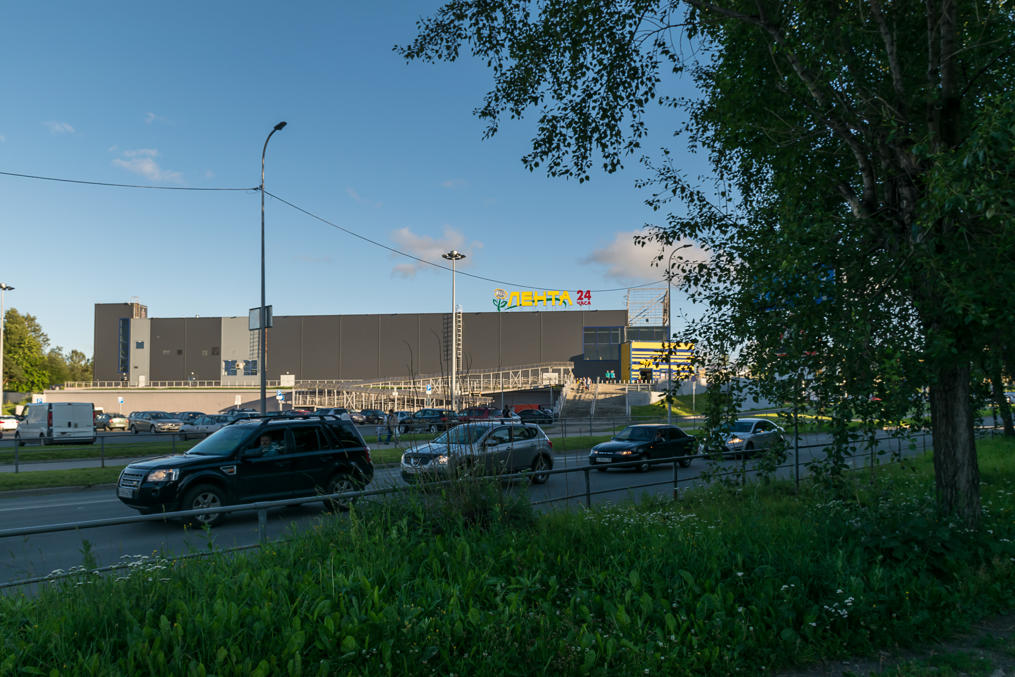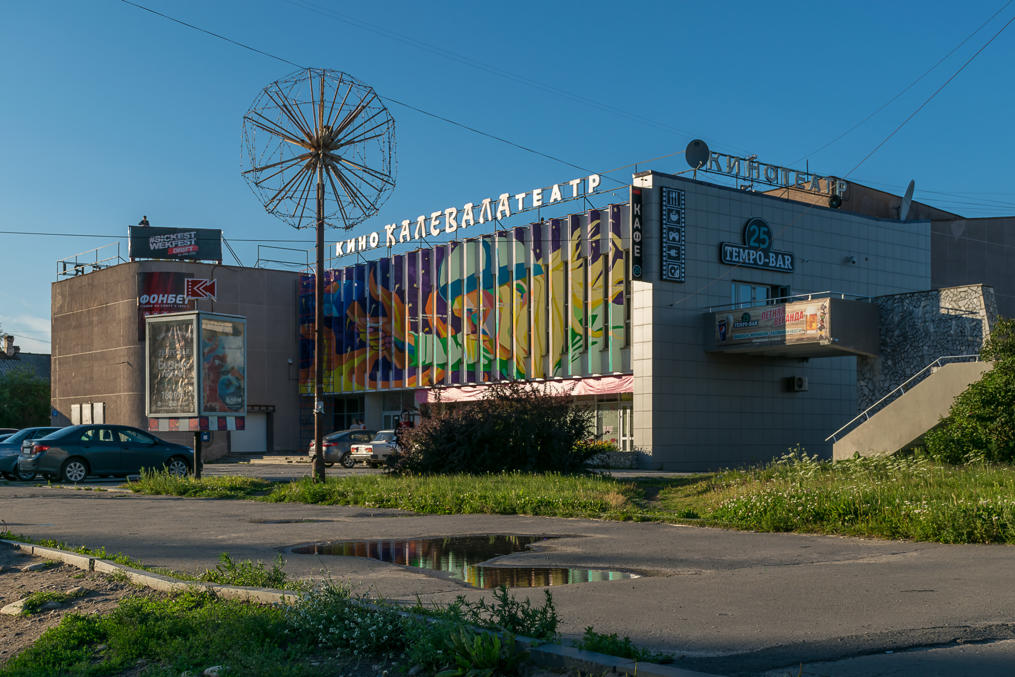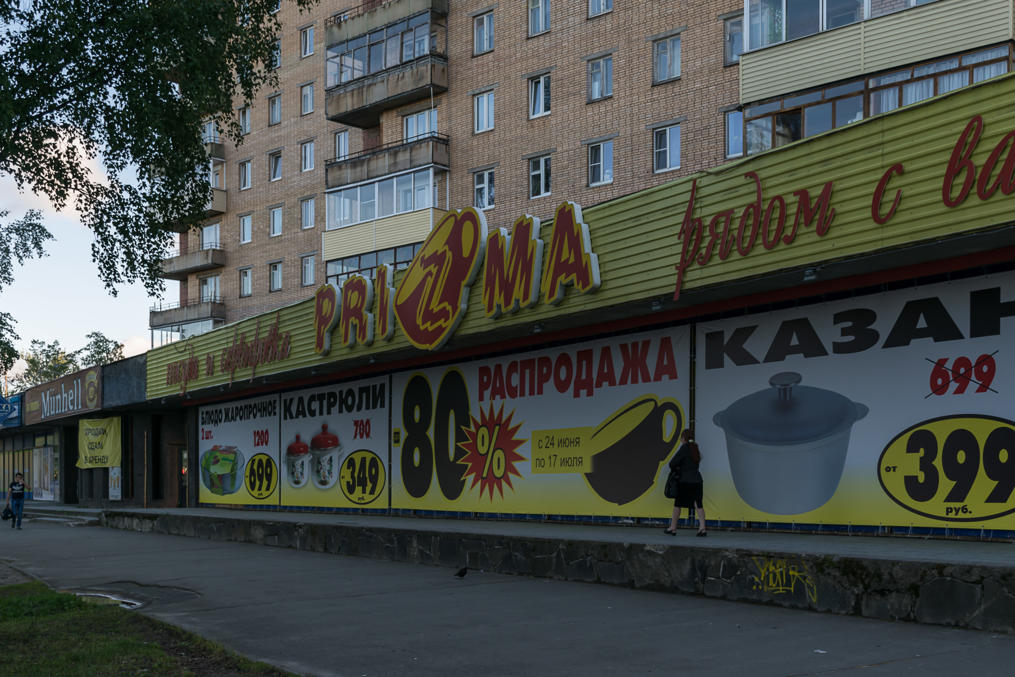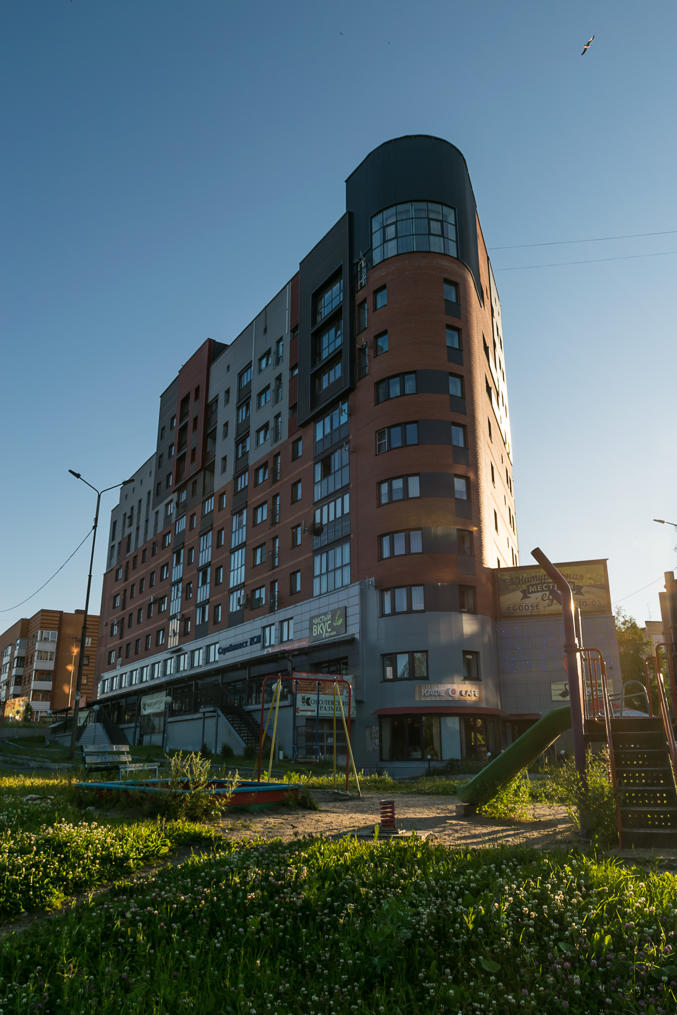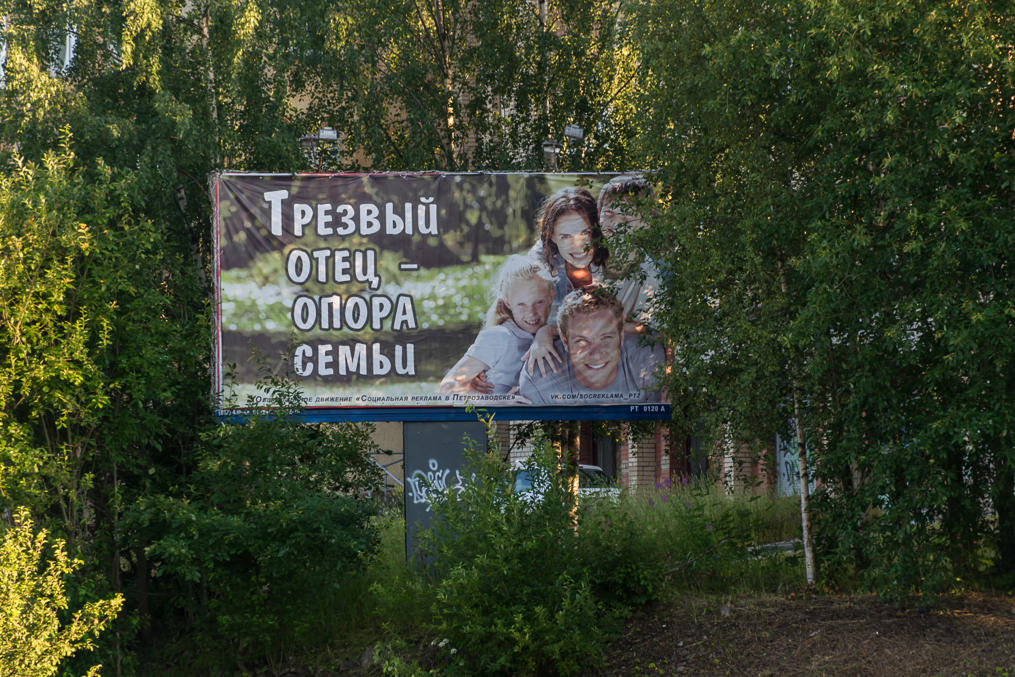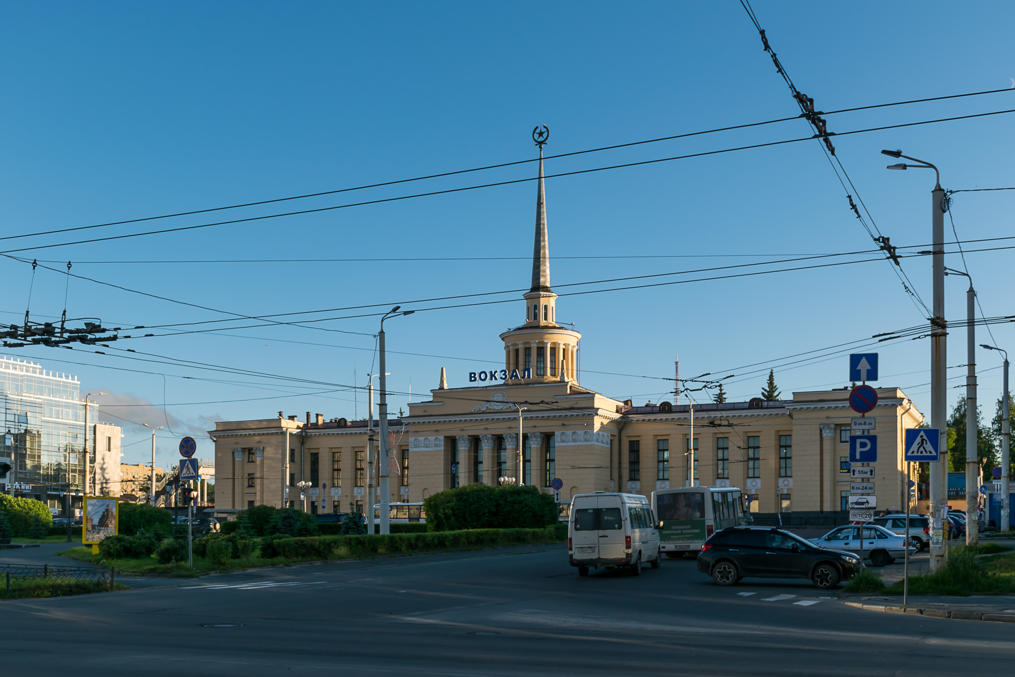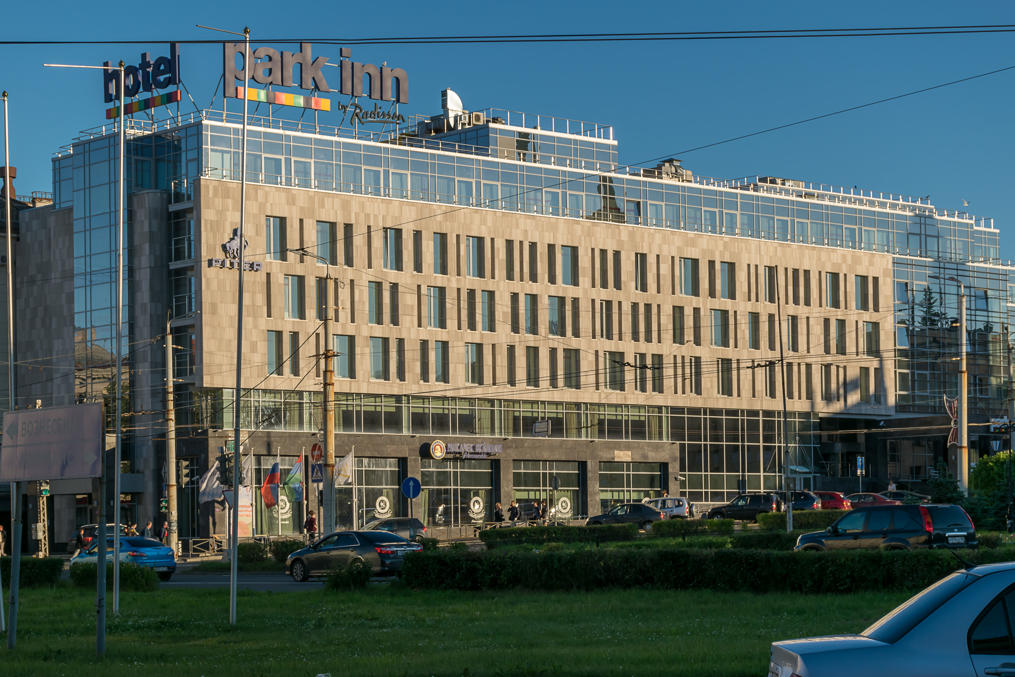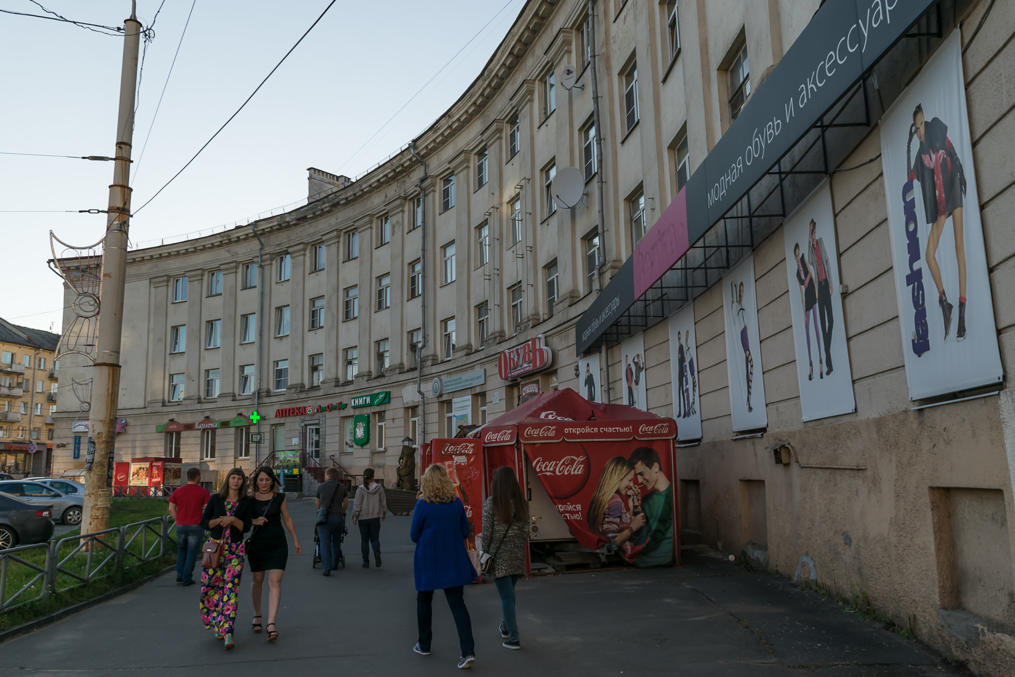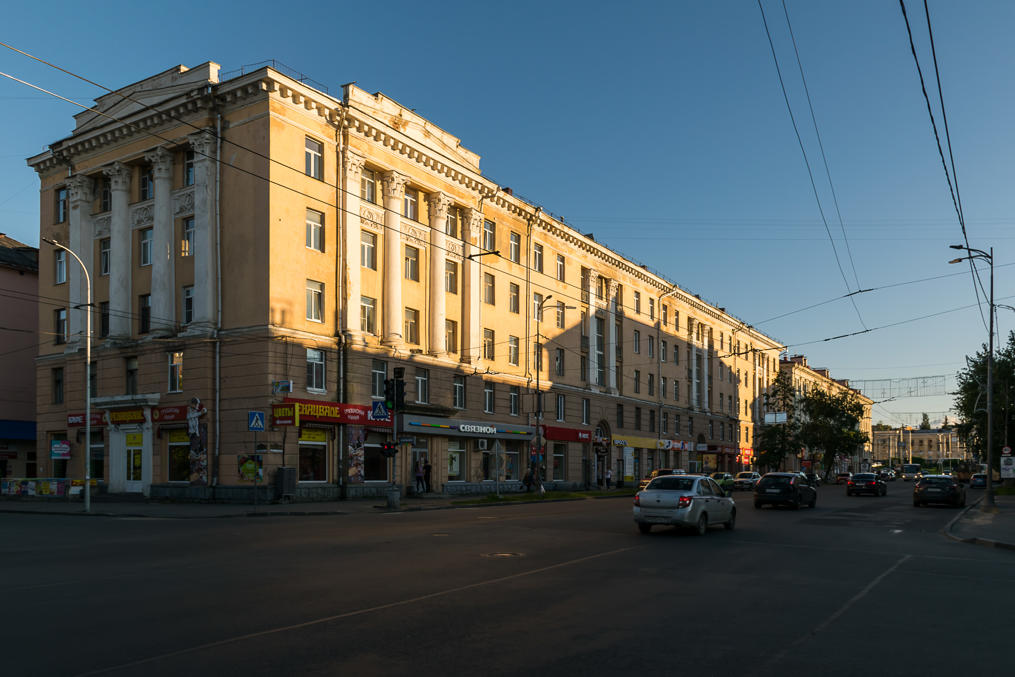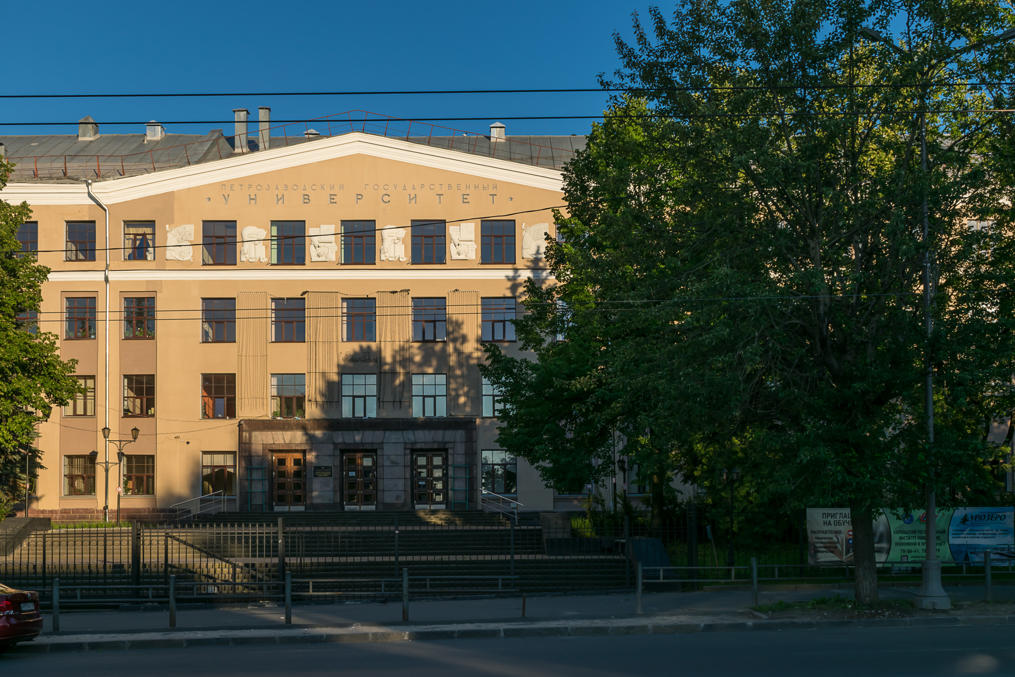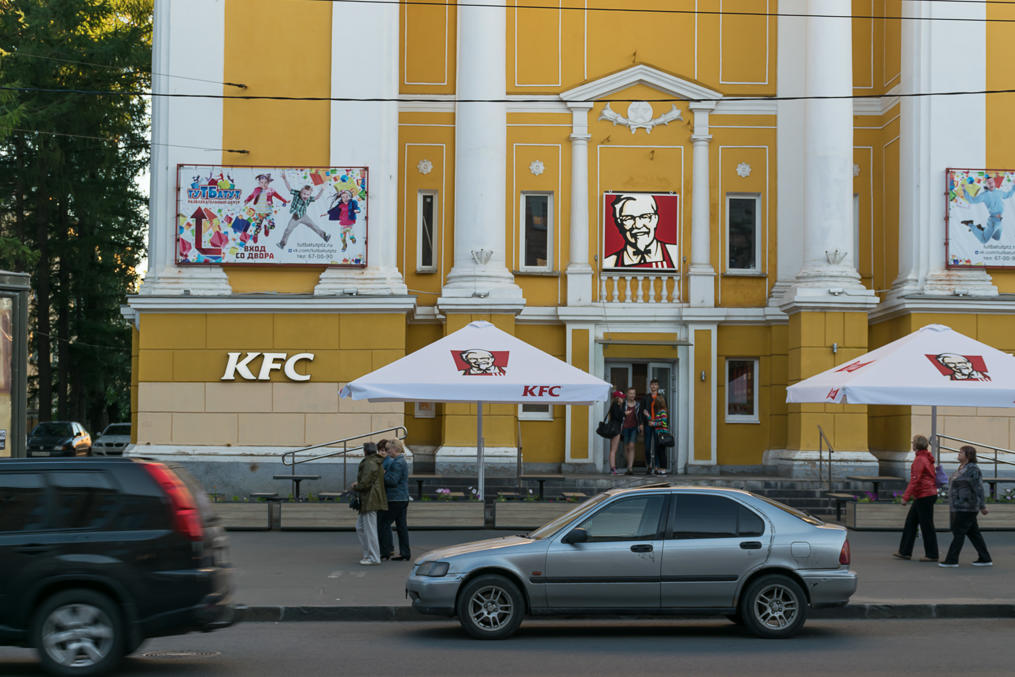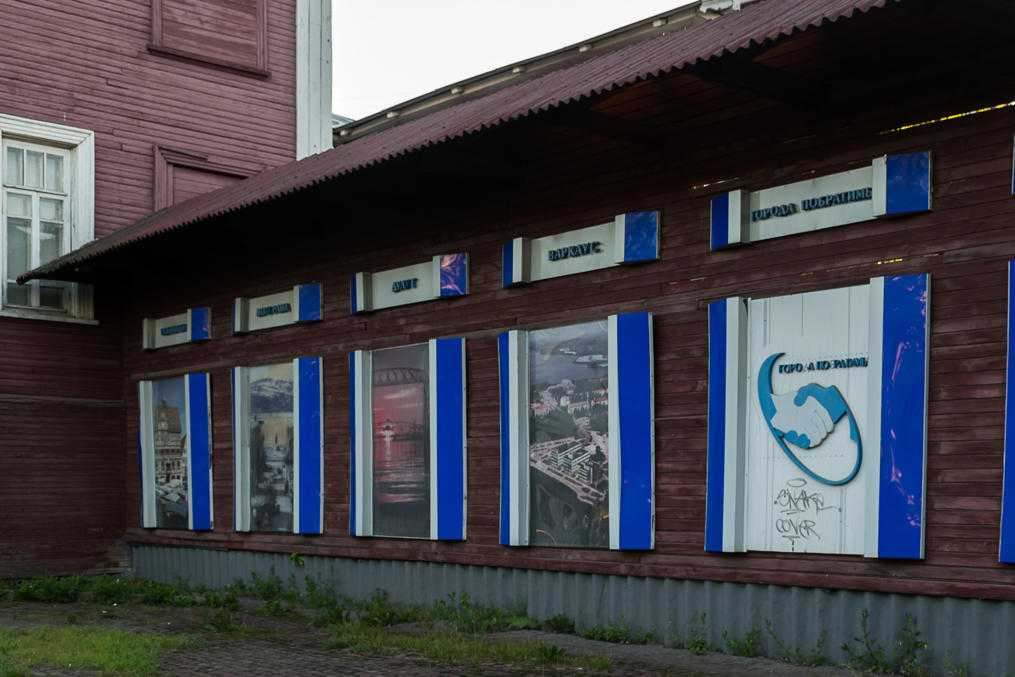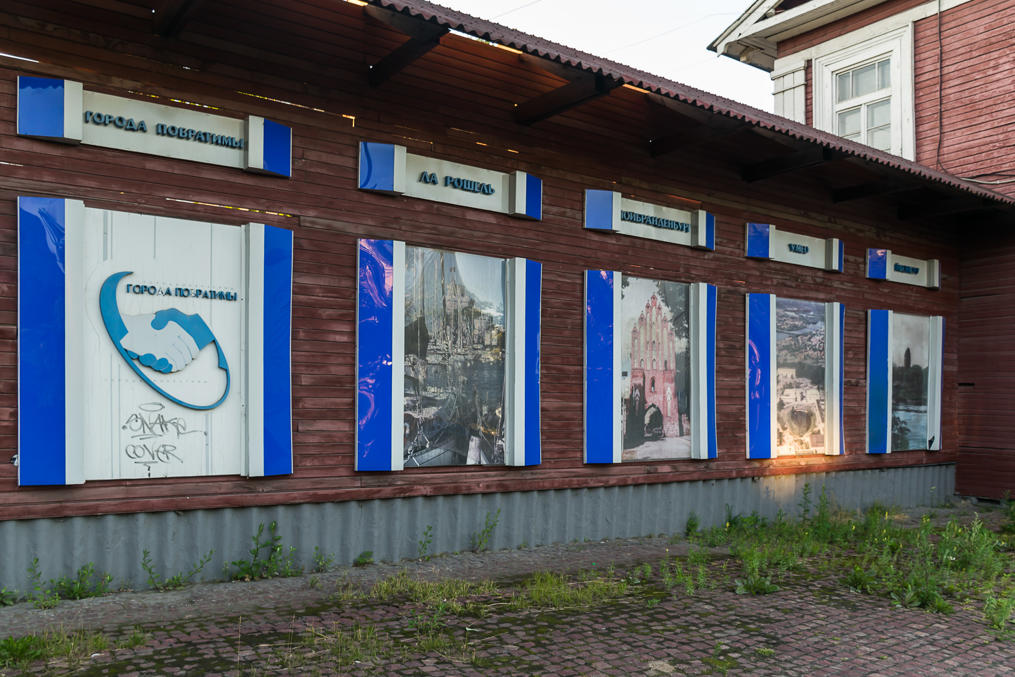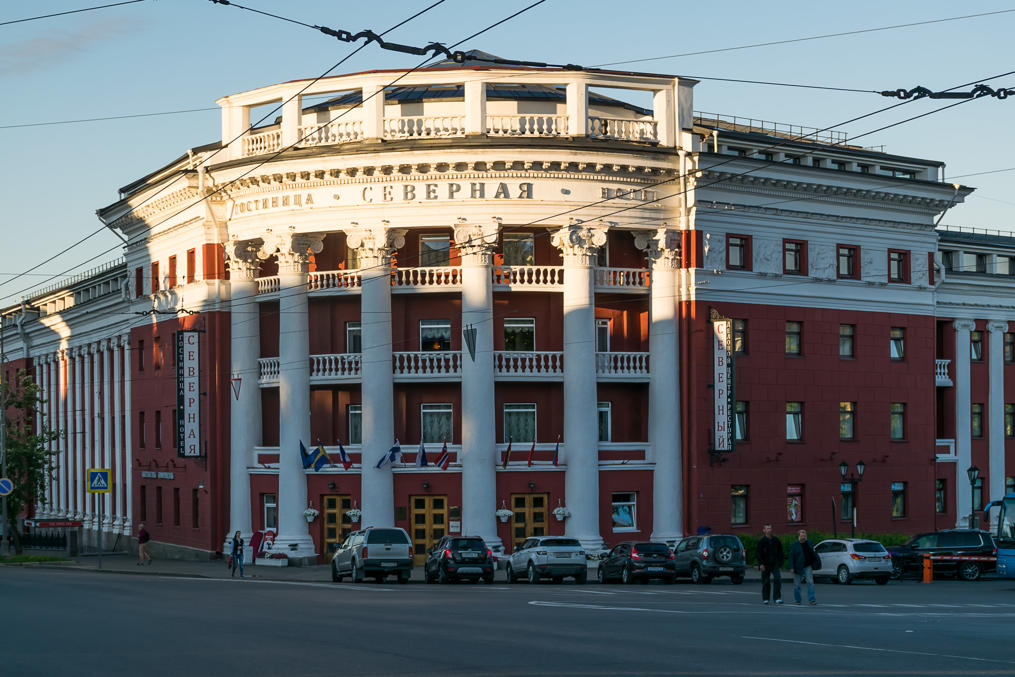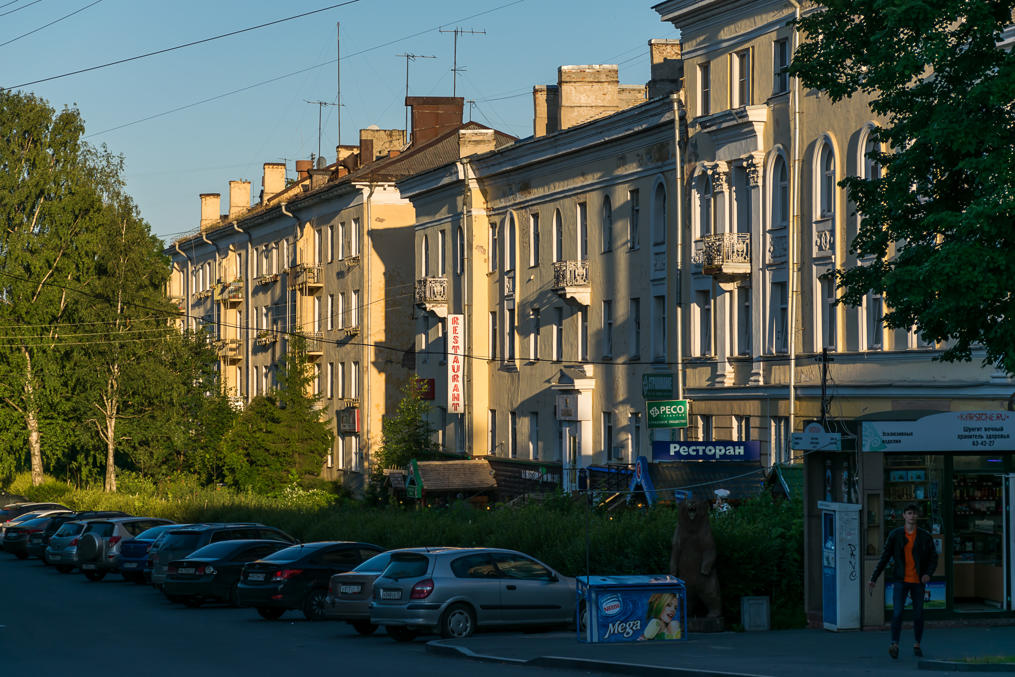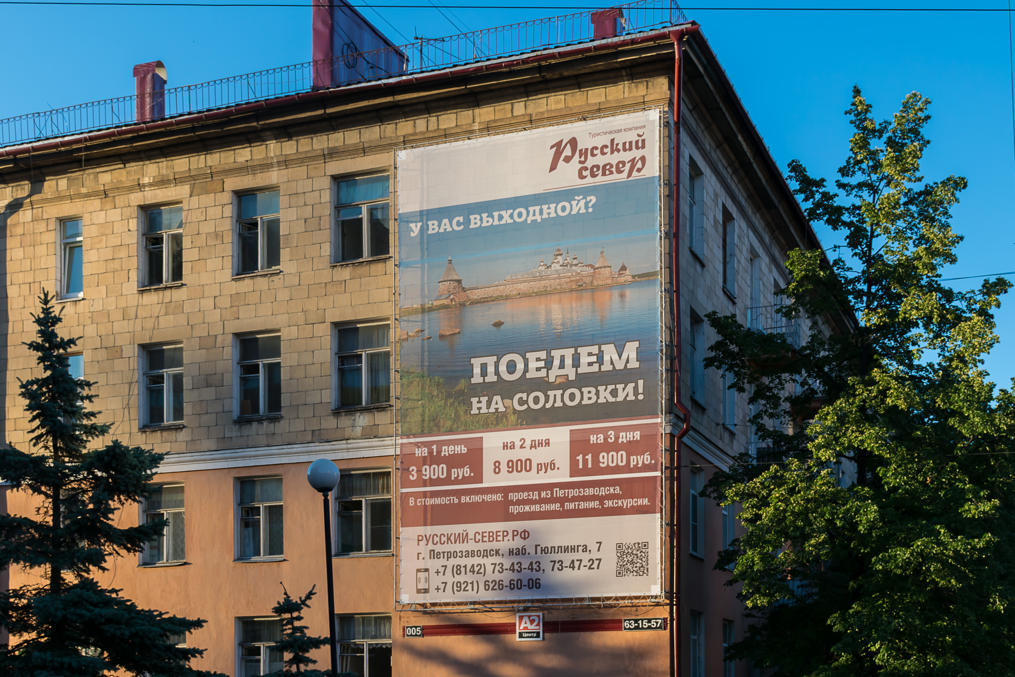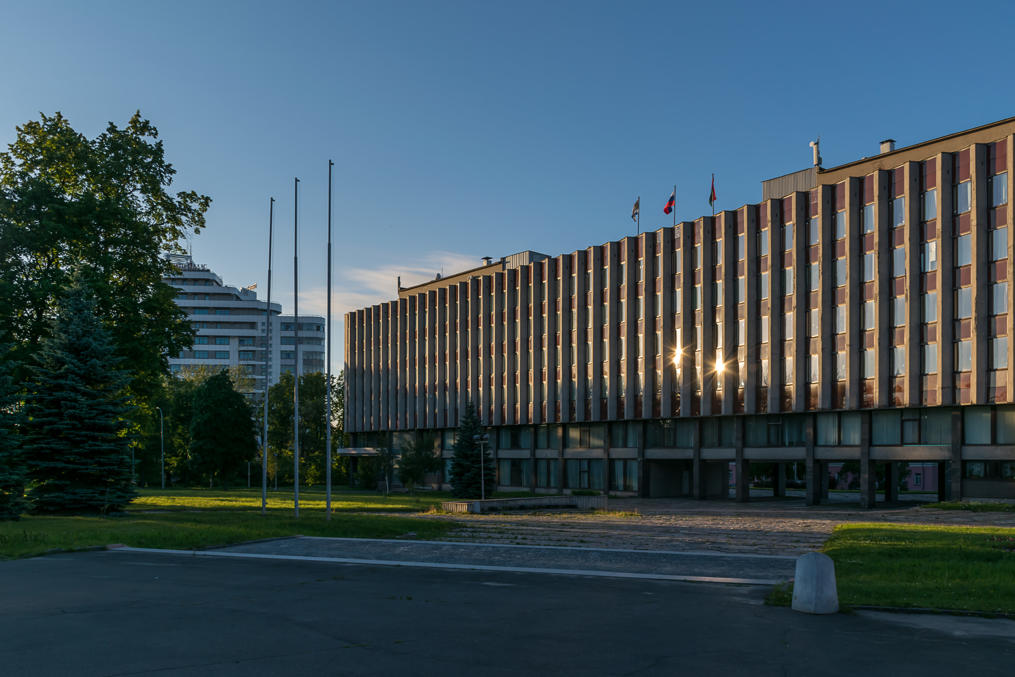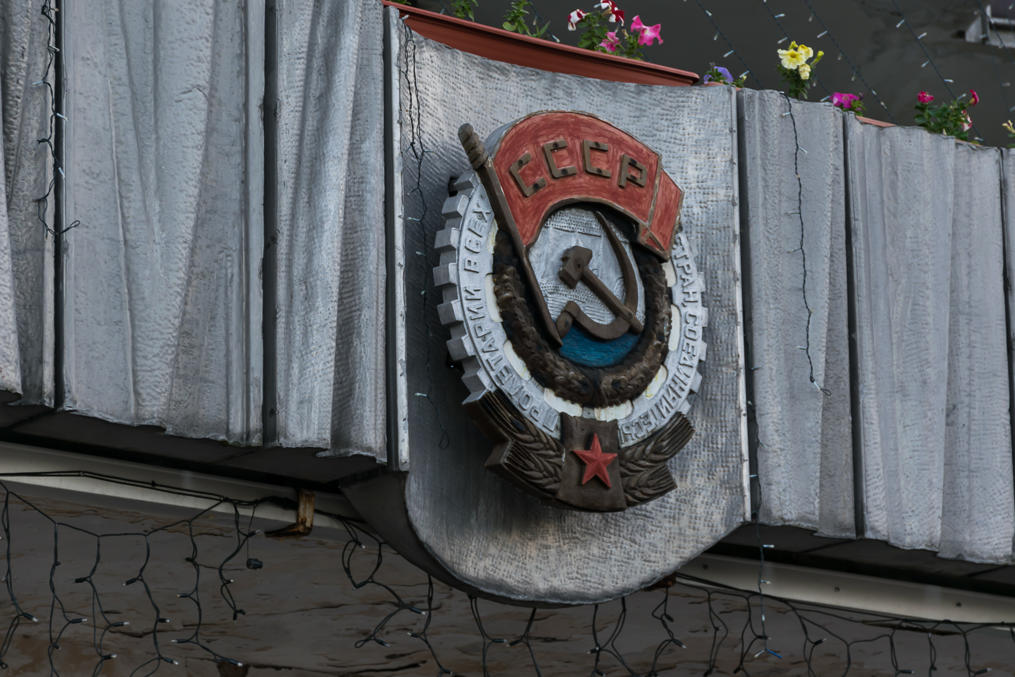Petrozavodsk (Петрозаводск, Russ. Peter Works City; known as Petroskoi in Finnish) is the capital of the modern Republic of Karelia (Russian Karelia), and its biggest city by far; with its population of 280,000 it is almost ten times bigger than the second biggest Karelian city (Kondopoga).
I do not often make posts about Russian cities, because I rarely actually visit Russian cities, because I'm just not interested in them much; over the latest years my heart has always been with the Nordics, and it's likely to remain this way. Which is not to say Russia isn't worth exploring! Most of its cities and regions do not really have any major sights, but then, neither does Finland, yet I find exploring Finland so interesting and satisfying. And indeed a great many blogs about Russian cities exist, and I know of a few good ones, though I'm not aware of any that post in English. And as for us, we were passing through Petrozavodsk on our way north and staying here overnight, so of course we didn't sit around in a hotel room, and went out to have a look at the city.
It should be said that Petrozavodsk is not really a Karelian city; it was founded in 1703 by the Russians and its population has always been predominantly Russian (at the moment there are 4% ethnic Karealians, <2% Finns, and <1% Vepsians). You wouldn't find signs in Karelian or Finnish there. In fact Petrozavodsk is fairly typical of a minor Russian regional center, with dusty streets, crumbling plaster on buildings, potholed roads, and the general air of underfunding and neglect. It doesn't really have any sights either. At the same time I must say I oddly liked Petrozavodsk. It's a pleasant city to be in; it's hard to express, but the people in the streets just seem... so nice and friendly. Far less alcoholics and gopniks that even in my native Yekaterinburg which is like five times bigger. Petrozavodsk is fun to walk around, taking pictures of various minor details. So this post is going to be a really long one, with 75 pictures.
1. We stayed at a hotel named Onego Palace (Онего-Палас), fairly close to the center of the city, and pretty much on the shore of the Onega Lake. A nice thing about travelling in Russia's backwater is that most of the time everything is really cheap here, as compared to St. Petersburg or Moscow, or especially Finland or other Nordic countries. This hotel cost, I don't remember, some 60-70 € per room per night, which is a lot for a city like Petrozavodsk, but really not much if you're used to Finnish prices. Of course I realize this sounds quite privileged, but still it was nice booking what was quite likely the best hotel in town so easily.
As I told in the previous post, we arrived to Petrozavodsk earlier than expected, and after enjoying the view from hotel window (admittedly not very impressive) we went out to explore.
2. This is what our hotel looked like from the outside.
3. The hotel was quite close to the lake waterfront, so this is where we went first.
4. The waterfront, which has been renovated relatively recently, is pretty much the nicest place in Petrozavodsk. The city is located on the western shore of the Onega Lake (Онежское озеро), the second biggest lake in Europe, after the Ladoga Lake, about 130x60 km large, excluding the huge Povenets Bay in the northeast, 60x18 km large. The Finnish name of the lake is Ääninen, "the loud one". Petrozavodsk is the only major city located on its shores (Ladoga Lake, on the other hand, has no major cities at all, just a handful of small ones), and it's quite commendable that the city built a nice embankment (most Russian towns never bother).
Onega Lake is, among other things, famous as the place where the White Sea-Baltic Canal (Беломорско-Балтийский канал; often shortened as Belomorkanal or Belomor, Беломорканал/Беломор) starts, in the north of the lake in Povenets Bay. Onega Lake is naturally connected with the Baltic Sea through Svir River, Ladoga Lake, and Neva River; the canals connecting it to Volga River and other major waterways of Central Russia already existed since early 19th century. The connection of these waterways to the White Sea in the north seemed rather logical. The 227 km long canal with 19 locks was constructed in just two years, 1931-1933, and became one of the more infamous construction projects of Stalin era. The construction was entirely done by gulag inmates (Canal Troops, kanaloarmeitsy (каналоармейцы), as they were officially called) with manual labor. About 250,000 people worked on the canal (though no more than 130,000 at any single moment). Officially, about 5% of them died, which of course is already horrible enough. Unofficial mortality estimates vary wildly, as is common with any discussions of Stalinist repressions. The canal construction was one of the subjects discussed in Alexander Solzhenitsyns' The Gulag Archipelago, his ultimate examination of the Soviet forced labor system; however, he is often accused of exagerrations. On the other hand, Stalin conscripted some of the major contemporary Soviet writers (including Maxim Gorky) to write propaganda pieces about how hard labor at the canal construction was reforming the character of the criminals. And of course they all did, because you do not refuse Comrade Stalin.
What is clear in the end is that the canal only ever saw rather limited use, as it was too shallow (at 3.5 m) for sea-going ships. The canal still exists and operates (although visiting it was not a part of our own trip). One of its lasting legacies is the iconic Belomorkanal cigarette brand; these were the cheapest, the strongest, and the shittiest cigarettes in the Soviet Union. In fact they've been continuously produced ever since 1932 on many factories.
5. A boring-looking city administration. The flag in the left, with a red, a blue, and a green strip is the traditional flag of Russian Karelia. In the middle is the Russian flag, of course, and the right-hand one is the Petrozavodsk municipal flag.
Up until the proofreading of this post I assumed the statue was one of Lenin. In fact this is none other than Otto Kuusinen, a Finnish communist. He was born in Laukaa, near Jyväskylä, in 1881; he was a member of the Finnish parliament for some years before Finland's independence, and was appointed People's Commissar of Education by the Reds during the Finnish Civil War. After the defeat of the Reds many of their leaders fled to the Soviet Union, Kuusinen among others. Most of them were subsequently imprisoned and executed in the 1930s during Stalin's Great Purge; Kuusinen was one of the few who weren't. At the beginning of the Winter War he was chosen (likely without much say in the matter) to be the figurehead leader of the so-called Finnish Democratic Republic, also known as Terijoki Government, because that government was physically located in the then border town of Terijoki (now knows as Zelenogorsk). Was the Soviet Union to completely conquer Finland, Kuusinen's goverment was to move to Helsinki and act there as Stalin's puppet regime. As we all known, ultimately the Soviet Union did annex a huge chunk of Finland but failed to conquer it outright, and thus the Terijoki Government was disbanded, having never really did anything of note. Kuusinen soon became a major CPSU official and remained in this position until his death in 1964. So from the official Soviet point of view he was probably the most important Finnish communist, and it makes sense that his statue was put here.
6. The waterfront has a number of funky statues. Many of them wouldn't look out of place in a Finnish town (because the Finns absolutely love funky statues)
7. Weight machines.
8. The "Fishermen" statue is the most iconic one by far. It was installed in 1991, and made by an American sculptor from Duluth, Minnesota. Duluth is one of the sister cities of Petrozavodsk. The State of Minnesota has historically been known for its significant proportion of Nordic immigrants, and there were particularly many Finns in Duluth; perhaps that's why it is a sister town for the capital of Russian Karelia.
You can also see a small peninsula in the background; this is where tourist boats to Kizhi and other destinations depart. Kizhi (Кижи) is the best known sight of the Onega Lake by far. It is an island with an open-air museum of old wooden houses and churches, a few of its own but mostly brought here from all around Russian Karelia, not unlike the Skansen in Stockholm probably. Never been there myself.
9. A less modern statue but more to the point: Peter the Great, at whose order the city was founded in 1703. Some foundries and ironworks already existed back then in the Urals (my home region), but of course it was extremely inconvenient to ship cannons and the like all the way from the Urals to the frontlines of the Great Northern War. So the new factory was established here at the shore of the Onega Lake. The plant was originally named after Shuya, a nearby Karelian village (Finn. Suoju; no relation to Shuya the old town in Central Russia). It went into decline after the war and was nearly abandoned for a time, but eventually recovered and still exists to this day. The modern name for the plant is Onega Tractor Plant (Онежский тракторный завод) because it, well, manufactures mostly tractors now.
Somewhere near this statue we found a restaurant and had our dinner there. The restaurant was a big one but with a distinct Soviet air, the kind of place where people in their fifties go to celebrate their marriage or something. The food was nice and it wasn't particularly expensive (by St. Petersburg standards at least) but the service was suuuper slow. Good thing we weren't in a hurry.
10. Nothing really important happened in Petrozavodsk thoughout most of its history. In 1941 however Petrozavodsk was occupied by the Finnish, the biggest Soviet city by far to suffer that fate.
Finland fought on the side of Nazi Germany in WWII from 1941 to 1944, and the only country it actually fought was the Soviet Union, which had recently attacked and defeated it in the Winter War of 1939-1940, and annexed a good chunk of Finnish territory (Karelian Isthmus and Ladoga Karelia; the Isthus was in particular a very developed region with Finland's second biggest city, Vyborg). The subsequent war with the Soviets was dubbed the Continuation War. Now, there's that popular myth that the Finns only ever wanted to get back what had used to be theirs, and so they stopped at the Finland's pre-war border and refused to fight anymore. This fits into the narrative of the noble little Finland valiantly fighting the oppressor, but as much as I love Finland the reality unfortunately is more complicated than that. While Finnish forces indeed stopped in the vicinity of the old border on the Karelian Isthmus(*), in the east in Russian Karelia they crossed the old border and continued to invade, eventually occupying a large chunk of it. This land never belonged to Finland, and the only claim they had was that the Karelians, a people close related to the Finns, lived there.
(*) Not really because of any particular benevolence as well. The old border in the Karelian Isthmus passed really close to St. Petersburg (which in fact had been the main reason Soviet Union had wanted to have it moved, and had attacked Finland over that in the Winter War). For the Finnish forces continuing on to the south from the old border essentially meant assaulting St. Petersburg. That would have meant a bloodbath of incredible proportions, with no particular benefits to Finland in the end; in fact even the Germans were unwilling to attack from the south as well, and that's why the huge Siege of Leningrad happened.
The endgame for Finland was what is usually called Suur-Suomi, Greater Finland, the state uniting all the Finnic peoples. The most natural border of such a state in the east were the "three isthmuses": the one between the Baltic Sea and the Ladoga Lake (Karelian Isthmus, along Neva River); the one between the Ladoga Lake and the Onega Lake (along Svir River); and the one between the Onega Lake and the White Sea (along the White Sea-Baltic Canal). Such a border would have been fairly easy to defend. This meant annexation of the Russian Karelia and Kola Peninsula by Finland, and Hitler totally didn't mind. Of course some people expressed even more ambitious plans, such as annexing Ingria (the modern St. Petersburg region), Estonia, Torne Valley (part of Sweden bordering Finland), and Finnmark also known as Ruija (northernmost part of Norway) but these never were anything more that fever dreams of a few nationalists. The occupation of Russian Karelia on the other hand was quite real.
The Finnish military administration intended to make Russian Karelia, well, not Russian anymore, by relocating all Russian people out of it, so that this land would be left over for enthic Karelians and the Finns. The Finnish certainly weren't Nazis and didn't want to genocide them or anything, but they intended to hand them over to Nazi Germany for resettlement, which honestly doesn't sound like a very bright prospect at all. Most of the Russian population in Karelia were settled there only relatively recently in the Soviet era. Most of them were already drafted or evacuated by the time the Finns came, so it were mostly the children and the elderly who remained. About 30% of them (24,000 people) were put into Finnish concentration camps. Most of these camps were located in Petrozavodsk, which was renamed to Äänislinna by the occupants (Finn. Ääninen Fortress; Ääninen (Loud One) is the Finnish name for the Onega Lake as I mentioned before; the new name was the literal translation of Onegaborg, which was what the Swedes had dubbed some minor fortress in the area in the 16th century). You might have seen the iconic photo from these camps.
The camps, again, were not death camps, and weren't meant to be particularly brutal. Nonetheless about 4,400 of the interned Russians died in them, mostly from malnourishment in the spring of 1942. Finland scarcely had enough food to feed itself, and the camps just weren't a priority. They kept releasing some people thoughout the occupation years but 15,000 still remained interned up to the very end, when the Soviets pushed back and retook Karelia in the summer of 1944. Ultimately Finland never managed to secure the third isthmus (along the White Sea-Baltic Canal), and in particular was never able to cut off Kola Peninsula from the rest of Russia.
The memorial plaque and the anchor in the picture were set up in 2004, to commemorate the 80 years anniversary of the liberation of Petrozavodsk. The plaque is dedicated to the seamen of the Onega Flotilla, a small Soviet naval force which existed on the Onega Lake in the war. The plaque mentions "liberation of Petrozavodsk from the fascists invaders"; it really irks me when the Finns in WWII are called fascists. It wasn't even Nazi, and "fascist" is a term which really refers only to WWII era Italy. Nonetheless all Axis powers are colloquially known as "fascist" in Russia.
11. One more war monument. I feel a bit sorry for the last guy. His surname literally means "One Asshole". Okay I'm going to hell for this I know.
12. A bit farther and the waterfront ends at a small harbor with a shipyard on the opposite side.
13. A small... well... what do you call a place where you can come and ride horses? The sign says "Horses can bite".
14. They have really nice-looking horses and ponies though.
15. A small but fairly beautiful river named Lososinka (Лососинка, Russ. Salmon River) flows through the city into Onega here.
16. The part of the city south of the river is usually known as Zareka (Зарека, Russ. literally "Beyond-the-River"). I think that's supposed to be one of the worst parts of Petrozavodsk (not really dangerous or anything, just ugly and dilapidated). But we didn't know that and that was the logical place to go on from the lake so here we are.
17. Some bridge over Lososinka.
18. Bus or maybe trolleybus stop in a bad shape.
19. Zareka is mostly built up with smaller Stalinist-era apartment buildings. These actually look quite nice, but it appears they're simply not maintained well here. The two-storeyed buildings like the one in the center are a common design throughout Russia; they're usually called "German cottages" as they supposedly were build by German PoWs after the war.
20. The sign on top says "Fresh Meat". It does sound a bit weird together with "Second Hand" sign.
21. House number signs in Petrozavodsk mostly do not have a unified design, and have advertisements on them. Each number seems to be sponsored by a different company, so to speak (this one has a real estate agency ad in the bottom, for example). This is one of the seemingly small details that end up giving the whole city an unkempt appearance.
The phone number in the advert is six digits long. Local phone numbers for landline phones in Russia are 5-7 digits long, depending on the size on the city. I remember the times when phone numbers in my native Yekaterinburg were 6 digits long, but they switched to 7 digits long ago, and St. Petersburg of course had 7 digits since forever. Petrozavodsk however is clearly not big enough.
22. All Russian cities have some sort of public transport (because absolutely not everyone can afford a car), and it is usually more or less usable, but can look quite nasty. Petrozavodsk, apart from buses, has a trolleybus system, but all trolleybuses look old and dirty and are covered with garish adverts as well.
23. Zareka reminds me a bit of Elmash (Эльмаш, Russ. Electric Machines, from the name of the local huge plant), the part of Yekaterinburg where I was born and went to school. Elmash looks a bit better but the architecture is very similar.
Trolleybus wires are of course quite an eyesore. Trolleybuses are a nice idea in general but it seems that in any Russian city where they exist they are usually the ugliest and the slowest kind of public transport. If there are both trolleybuses and trams, the trams tend to look much better. I really have no idea why this is the case.
24. Such enclosed vegetable stands make me feel a bit nostalgic. We had them in Yekaterinburg (you may notice that its similarities with Petrozavodsk are a constant theme here) but they're much rarer in St. Petersburg.
25. Diksi (Дикси), a very common Russia grocery store chain.
26. Furniture shop. It is named "Two sofas" but the logo shows just one.
27. "Shawarma's here!"
28. "Buying elk, deer antlers, any condition". The adverts below say "Will help to get your loan approved, your credit rating doesn't matter".
29. "One's smart, anothers a fool — one gets a book, another goes to a pub."
30. Petrozavodsk road quality is actually mostly good. There are a few really potholed roads (including some major ones) but I ended up not taking pictures of any.
31. A school. It looks a lot (though not exactly) like the one where I studied in Yekaterinburg when I was a child. This is not in Zareka anymore, and this part of the city looks nicer.
32. Many apartment buildings have old crooked wooden barns in their backyards. It gives them a sort of a rustic look if you're into that kind of thing.
34.
35. The Consulate of Finland occupies a new building with a very Finnish look.
36. The main Lenin statue in Petrozavodsk is located in the middle of the square near the old plant. Actually the nearby territory of the old plant was sold for redevelopment some years ago, and the modern Onega Tractor Plant is located on the outskirts of the city.
37. Karl Marx Avenue (проспект Карла Маркса), one of the prettier streets of Petrozavodsk.
38.
39. Toy store.
40. Not much in Petrozavodsk actually reminds you that you're in Karealia, and this is a little sad. There a few streets named after some Finnish or Karelian communist leaders (Antikainen, Kuusinen, Rovio... all but Kuusinen very obscure) but that's about it. This small park is named after Elias Lönnrot, the author of Kalevala, but you wouldn't have guessed it without a sign.
41. Maternity clinic.
42. The maternity clinic still has some generic Soviet-era statues of mothers and children.
43. Petrozavodsk buses look no better than trolleybuses. I remember buses of this brand (Otoyol — I think it's Turkish) in St. Petersburg, they were very cramped, shoddily made, and invariably dirty. There are no Otoyols in Petersburg, and I wouldn't be surprised if Petrozavodsk is where the very same buses in fact ended up.
44. The local Pension Fund branch. For some reasons Pension Fund buildings in Russia nearly always tend to be extremely ugly, often among the ugliest buildings in town.
45. Petrozavodsk still has a number of old detached wooden houses. Of course they don't look very good. Only poor people in Russia live in detached wooden houses; everyone tries to build a brick or a concrete house if they can. I'm not sure why; Finland seems totally fine with wooden houses, old and new alike.
46. We rested in our hotel for a while, and went out in the evening to have one more look at the town, beginning with the lake shore again. The graffiti says "You everything to me" (Ты мне все — a little ungrammatical and therefore ambiguous in the original as well). By the way Petrozavodsk is located on the shore of a relatively small bay of the Onega Lake, otherwise you wouldn't have been able to see the opposite shore.
47.
48. There is a boat rental point at the embankment too.
49. A few new residential buildings seem to be constructed in Finnish style.
50. They look quite nice by Russian standards, although you still can notice some traditional Russian shoddiness in construction (for example, a sidewalk from the lake to these buildings was completely eroded by a stream in one place). And unlike the previous one, this building seemed nearly uninhabited; there were just two or three cars at its big parking lot. Maybe it's just not completely finished yet.
51. Some local education establishment. "Knowledge is harder than cash."
52. Lenta supermarket, a familiar sight. It is a supermarket chain originally established in St. Petersburg, and now common all over Russia.
53. Some child drawing lost on a sidewalk by someone. Kids these days draw scenes from Minecraft the video game. Surreal.
54. Old cinema named Kalevala.
55. Kichenware store named Prisma (well, Prizma actually), not to be confused with Prisma the Finnish supermarket chain. The real Prisma is nowadays the only Finnish supermarket chain operating in Russia (there used to be K-Ruoka, owned by the same company as Finnish K-Markets, but these guys shut down in Russia and sold their supermarkets to Lenta in 2015), but only in St. Petersburg so far, not in Karelia.
56.
57. Some small church or chapel being built.
58. "Sober father is the backbone of the family."
59. Railway station. The Murmansk Railroad passes through Petrozavodsk. There is a number of long-distance trains stopping here; their destinations are Murmansk, St. Petesrburg, Novgorod, Moscow (either via St. Petersburg or directly) and Minsk. There is a rail line to Suojärvi, a small town in Ladoga Karelia, but there are only two passenger trains in a week going there (although the distance isn't that great).
Sururban train service (elektrichka) has nearly collapsed here as well, with just a single train arriving in the morning from each direction (north and south), and departing in the evening. Suburban trains in general have been on a decline in Russia thoughout the latest 15 or 20 years. Their network was quite comprehensive in Soviet times (you probably could travel all the way from Murmansk to Vladivostok just changing between suburban trains), but many old routes do not really have any economic sense, since the buses tend to be faster and cheaper. Of course at least in some cases the state could in theory have invested in these trains and made them faster and more attractive to passengers.
Petrozavodsk also has an airport (named Besovets, Бесовец) but currently there is just one flight to Moscow per day. Most minor regional airports in Russia tend to be connected only to Moscow, and you have to change flights there, even if you're travelling between two cities in, say, Siberia. No cohesive network exists.
60. A modern hotel near the railway station.
61.
62. Lenin Avenue (проспект Ленина), going from the railway station to the lake, is the central street of the city. It has a lot of small shops and restaurants (many of them actually look fairly nice), and the buildings there are mostly Stalin era ones, with pillars and stucco.
63. A mall near Lenin Avenue. You can notice that it has a Burger King.
64. Petrozavodsk has a university as well, and this is its main building. It's a proper university, not just some private diploma mill (lots of these sprouted in every major Russian city in the 1990s). Perhaps this is one of the reasons why Petrozavodsk actually seems fairly lively and having its own soul, so to speak. I've always noticed that the number one thing that brings life and nice atmosphere to any city is a university.
65. Okay whoever put Colonder Sanders there at the entrance of a Soviet era building (community center? theater?) is a genuis.
66. Petrozavodsk has a number of sister cities and the most important ones are all listed here. Its sister cities in the Nordic countries are Joensuu and Varkaus in Finland, Umeå in Sweden, and Mo i Rana in Norway. Incidentally, all of these except Varkaus are located on the so-called Blue Highway, an international tourist route, which in theory passes through Petrozavodsk as well (although the only place where you can actually learn this is a Wikipedia article).
67. More sister cities.
68. A beautiful Soviet era hotel, named Northern Hotel (гостиница Северная). Note the Nordic flags above the doors. Such places tend to retain Soviet era service and room interiors as well; I wonder if it's the case here as well.
69.
70. Lenin Avenue goes almost all the way to the Onega Lake, seemingly just plunging there.
71. Petrozavodsk has a McDonalds, too!
72. An advertisement for tours to Solovki. Solovki (Solovetskiye Isles, Соловецкие острова) is a small archipelago in the White Sea. It's a fairly interesting place; there is an old monastery there. It was shut down in Soviet years, and in 1923-1939 the very first Soviet gulag operated in its buildings. After that the islands belonged to the navy, and in 1990 the monastery was restored. Solovki, Kizhi, and Valaam are the three major island destinations in the Northwestern Russia — located in the White Sea, the Onega Lake, and the Ladoga Lake respectively.
73. Passing by the city administration again.
74. Which actually still keeps the Soviet coat of arms!
75. And back at the hotel. Petrozavodsk like St. Petersburg has "white nights" in summer, when the sun does set for a few hours but it never gets darker than twilight.
On the next day and for the following two weeks we were above the Arctic Circle already, in the land of the midnight sun. To be continued.
